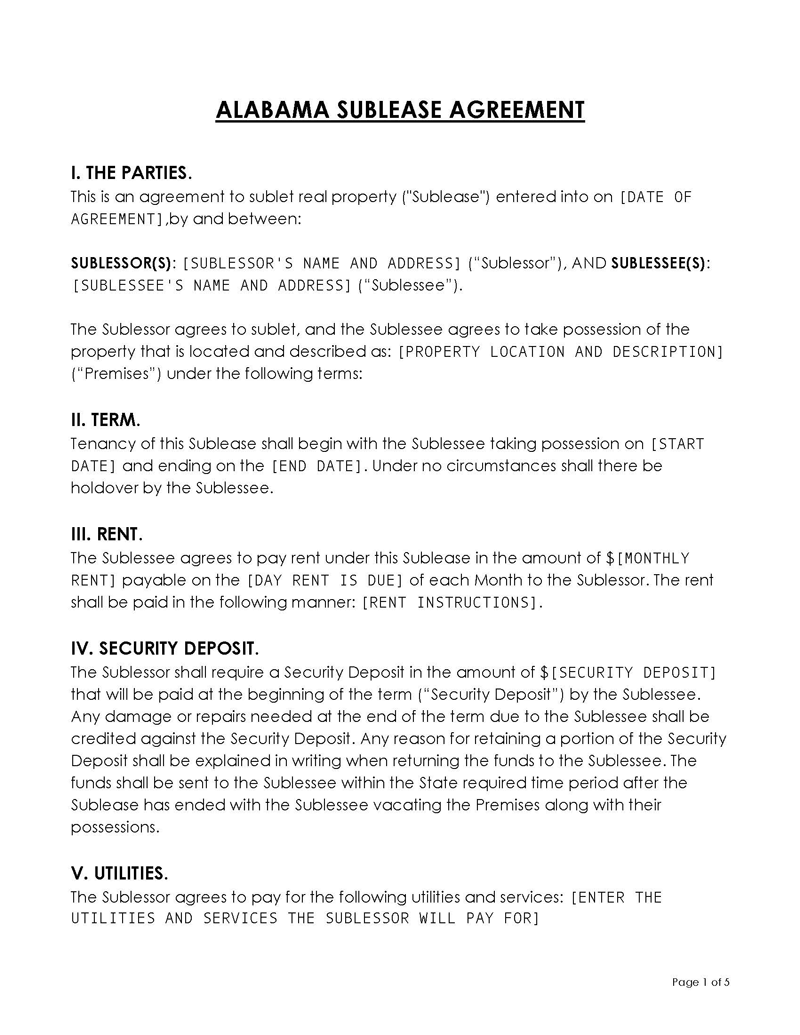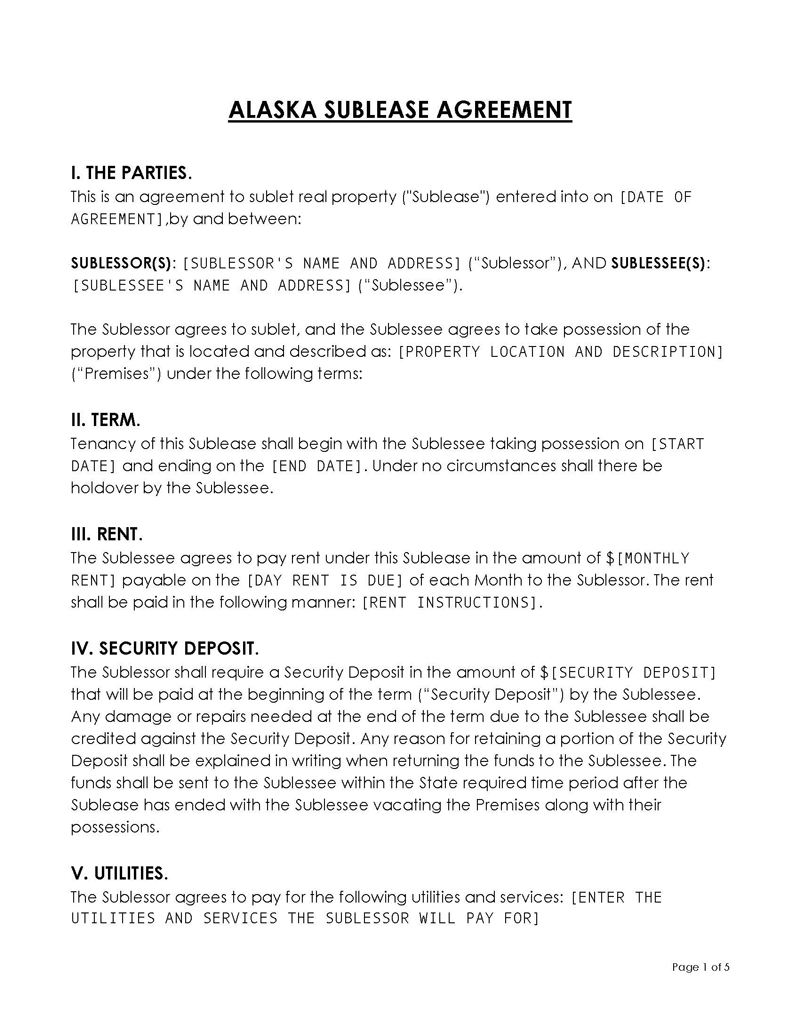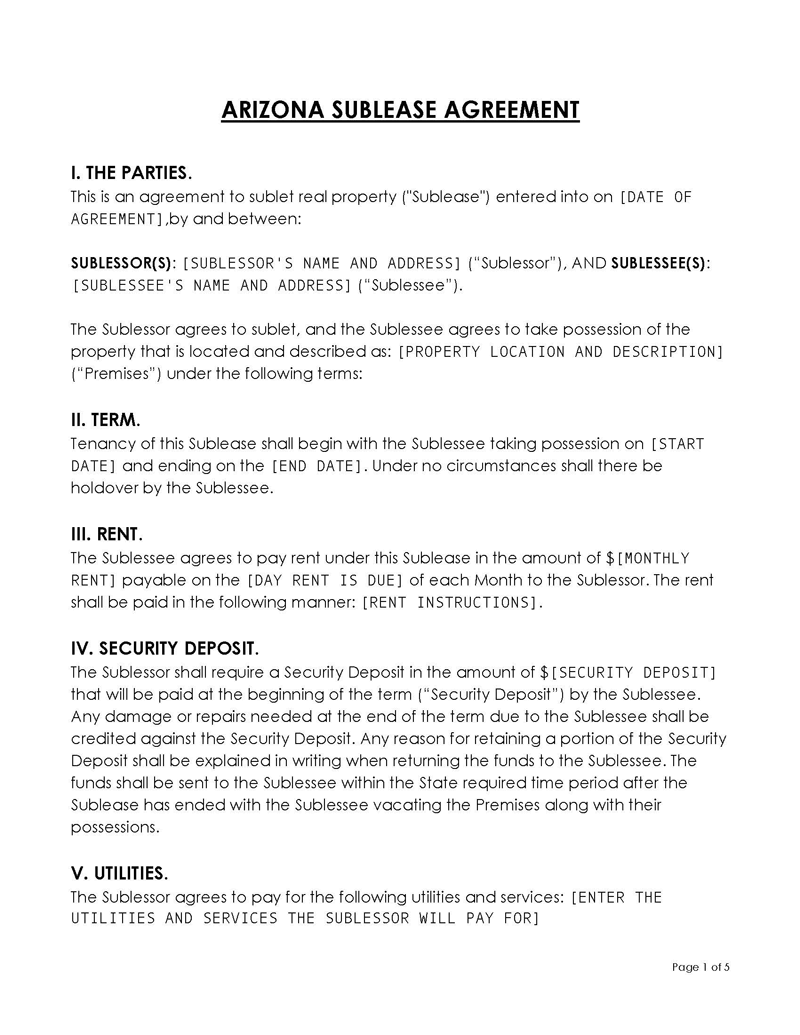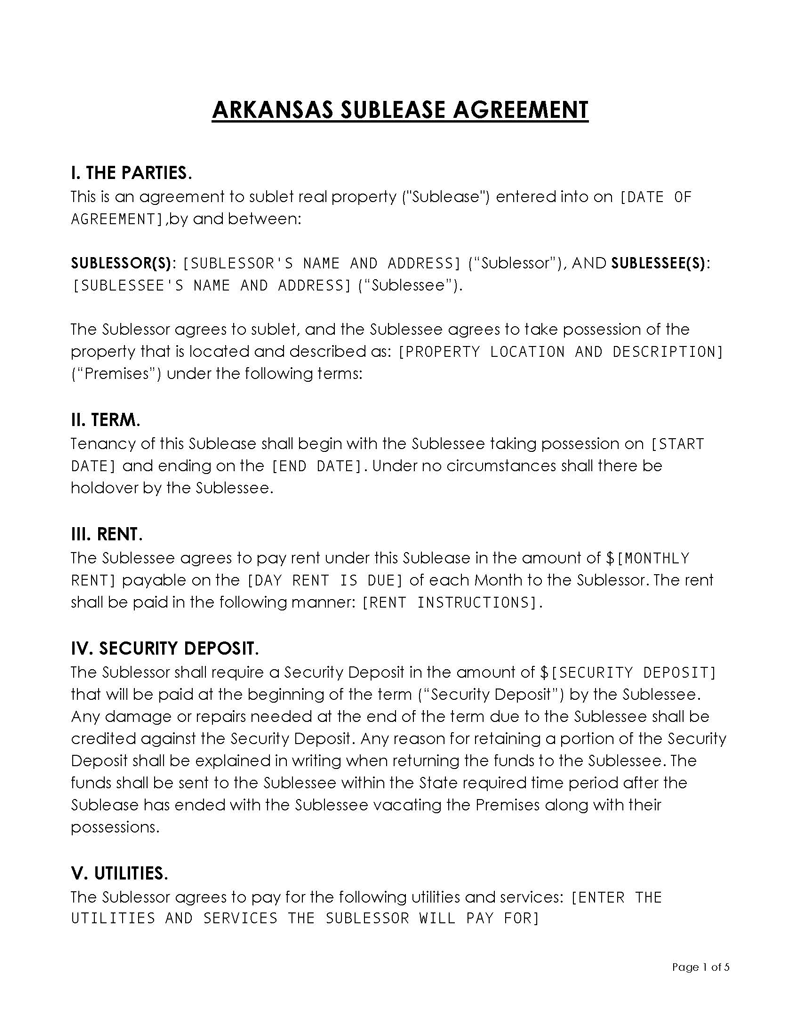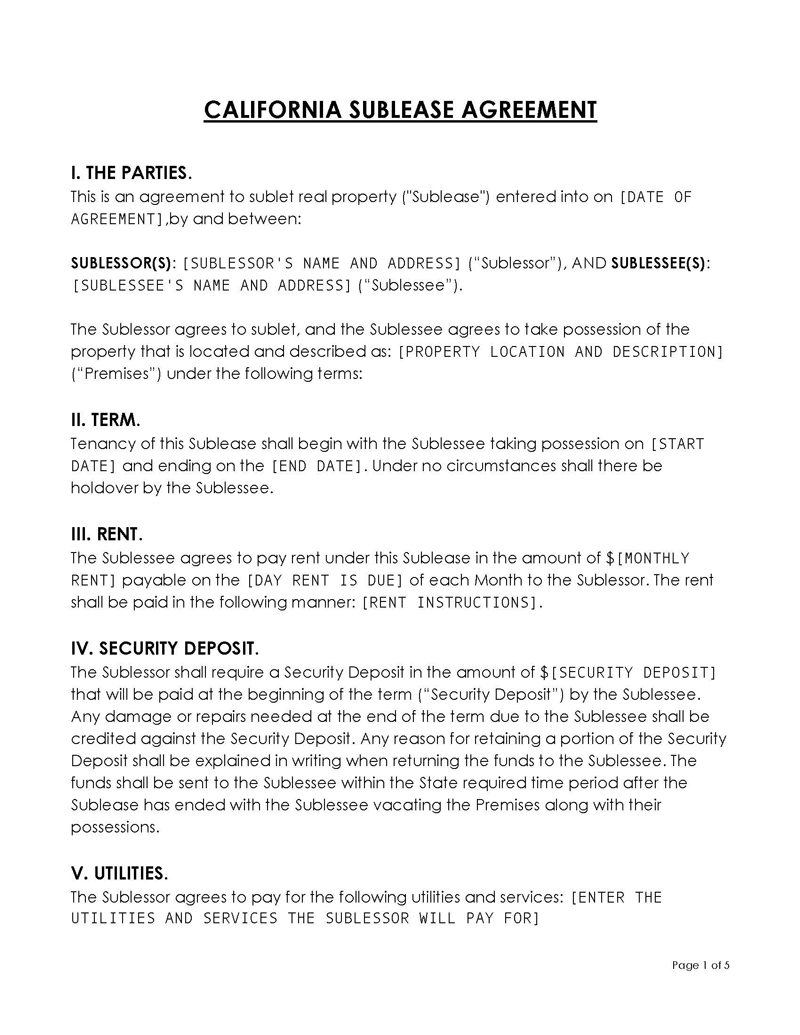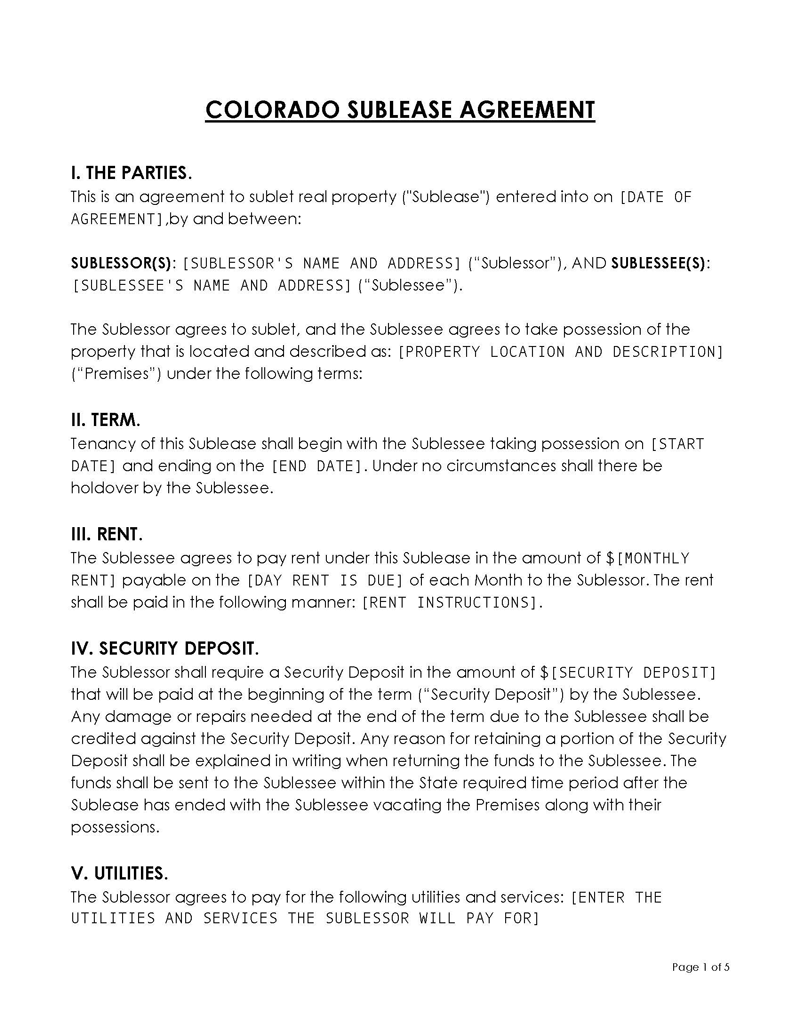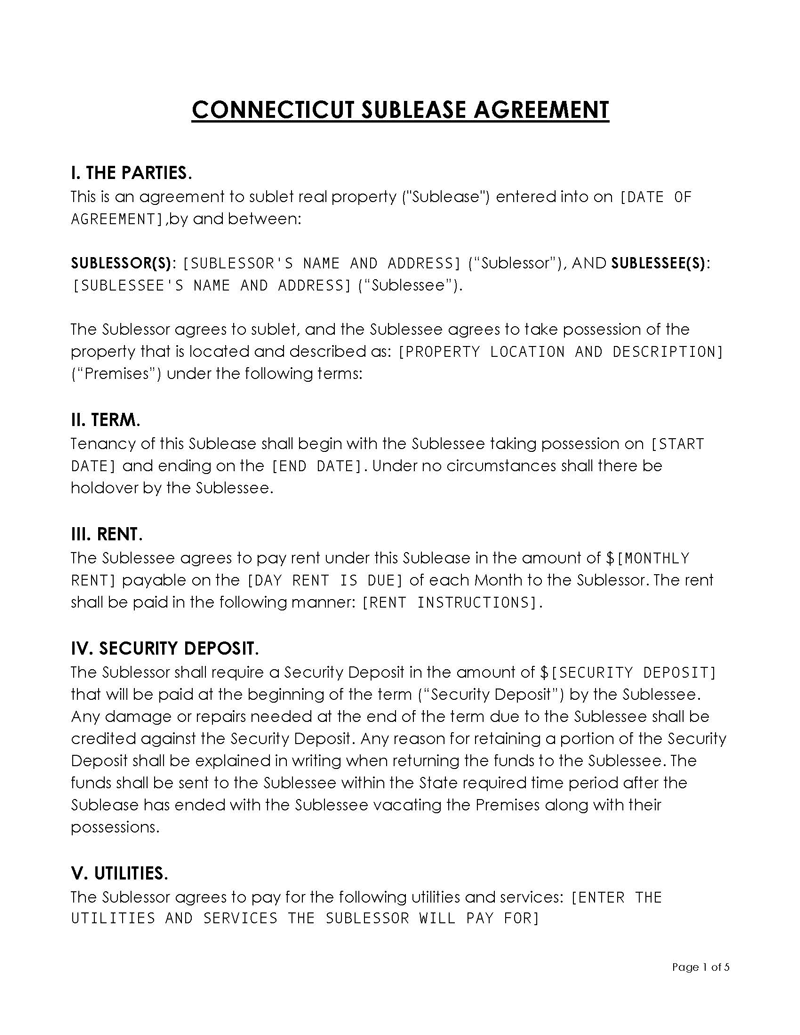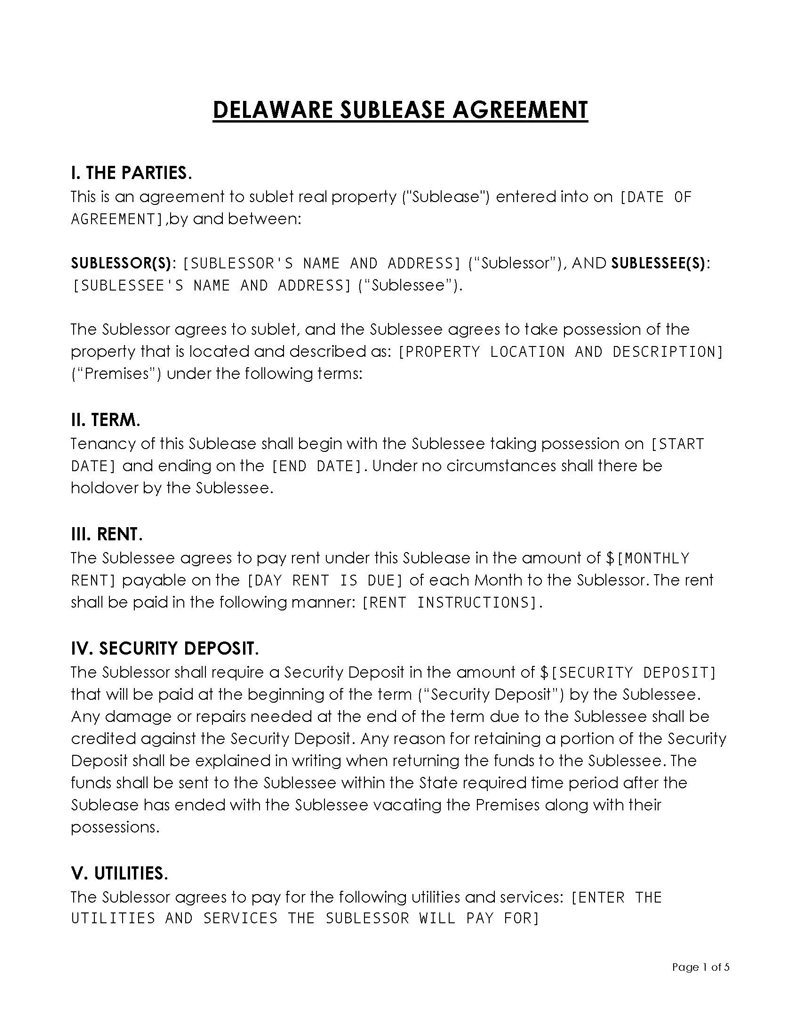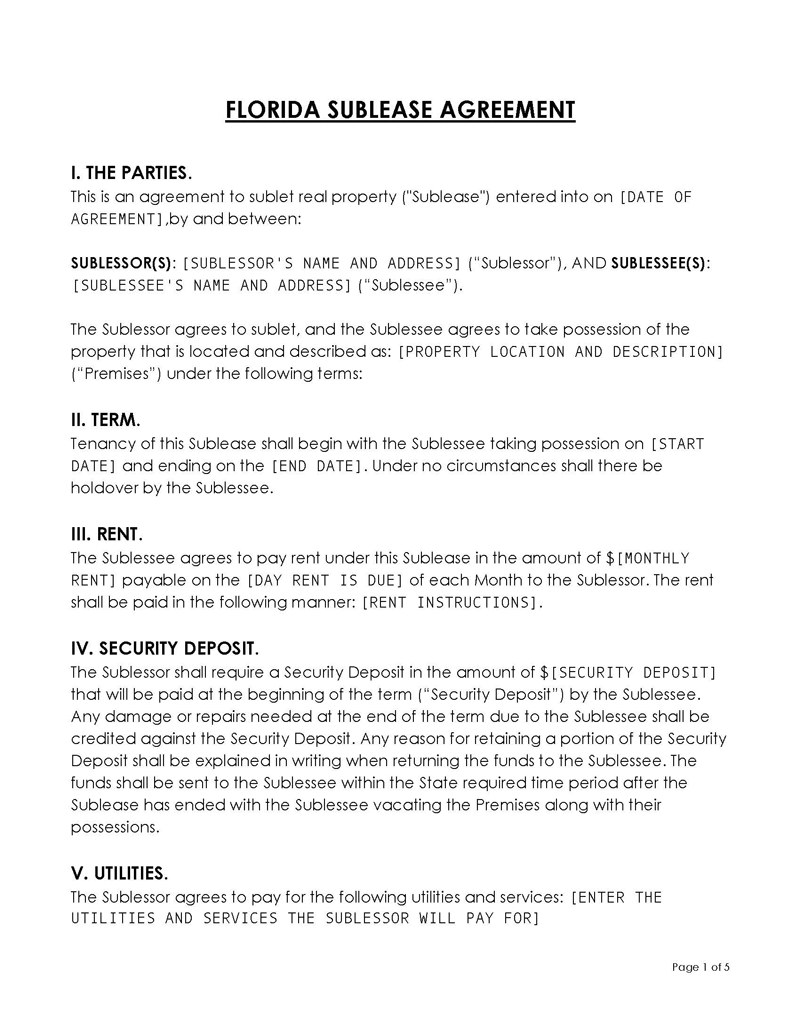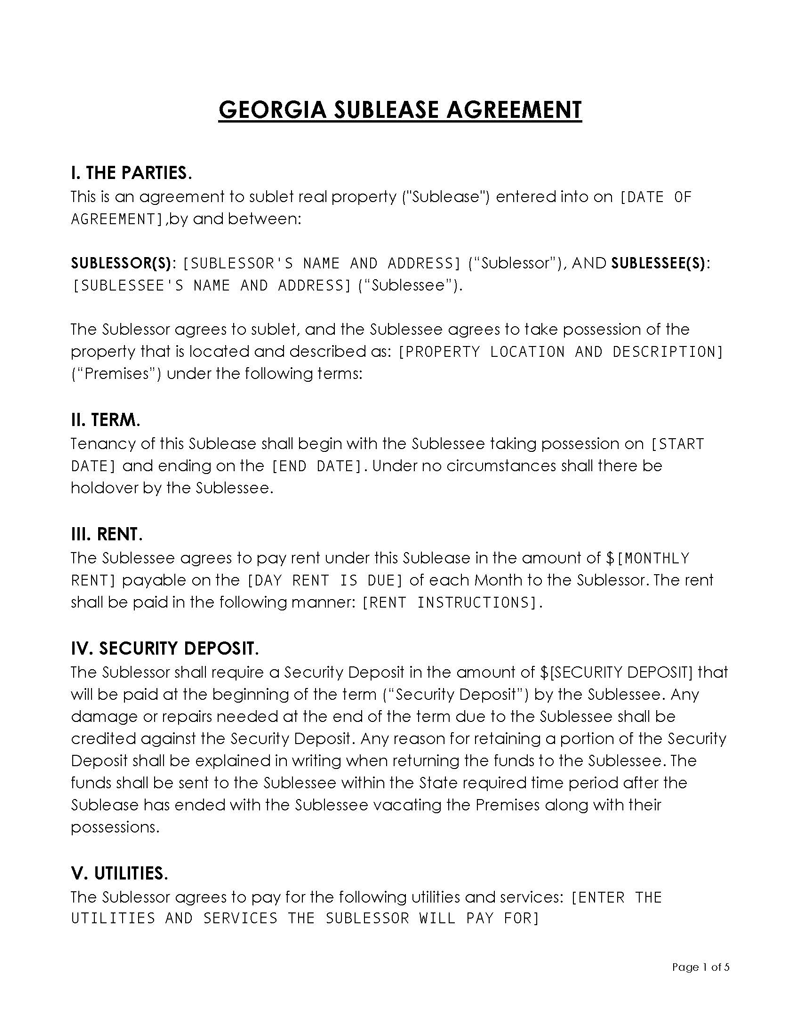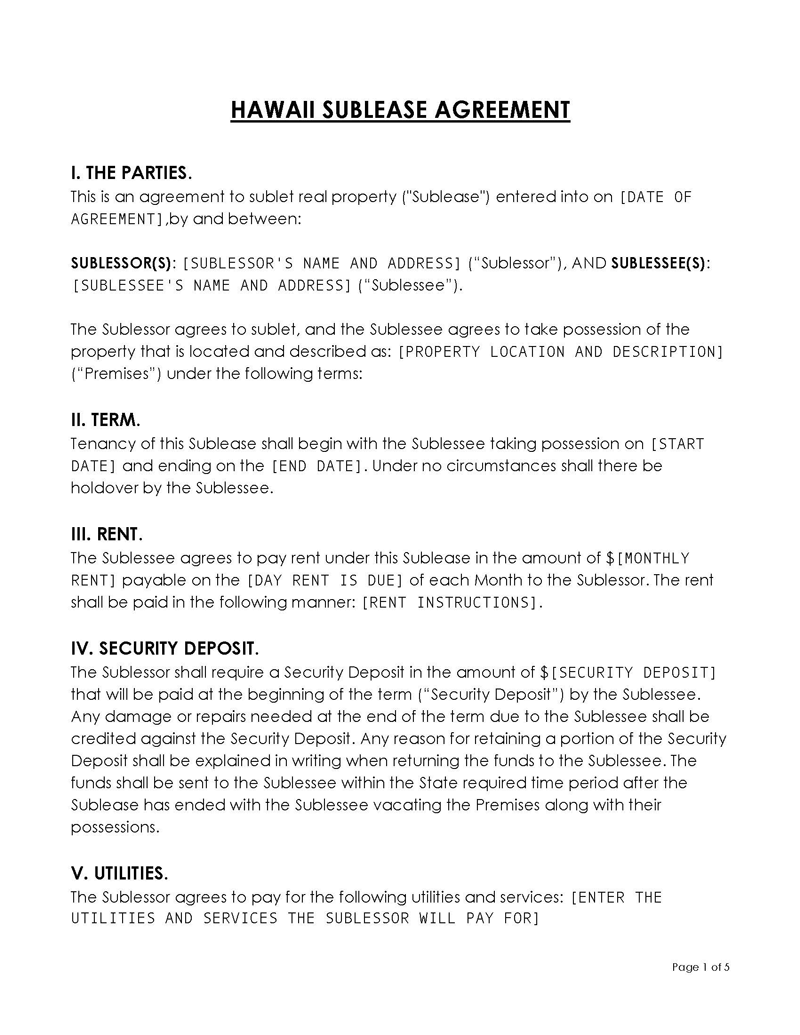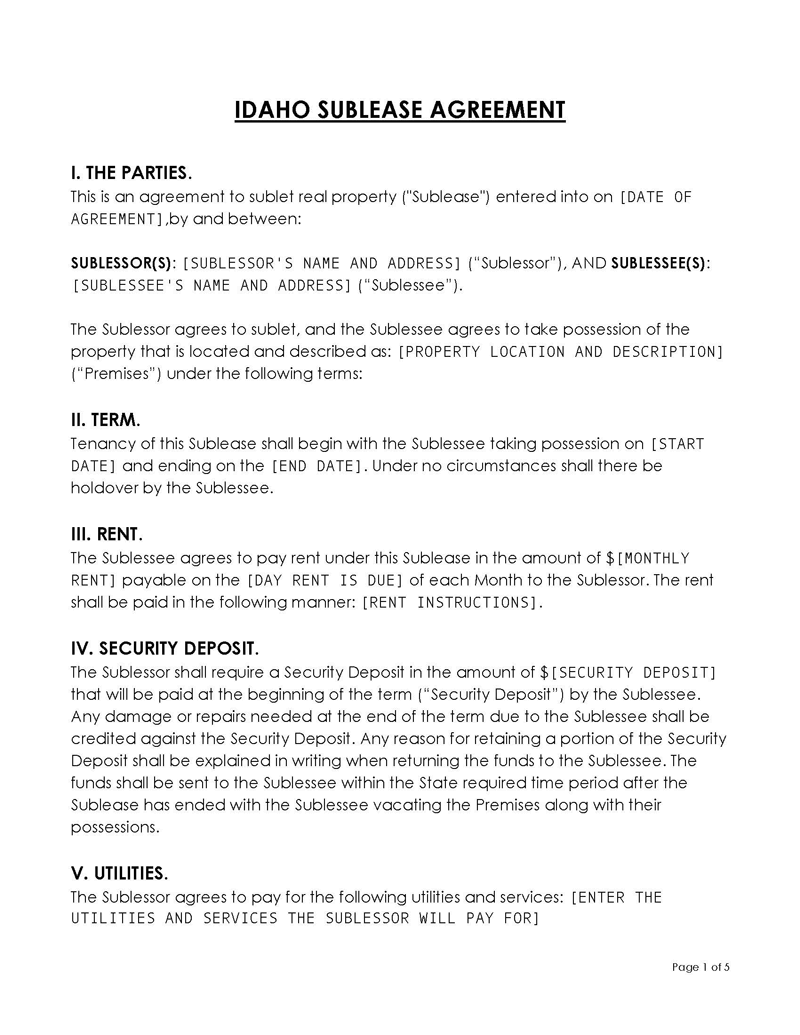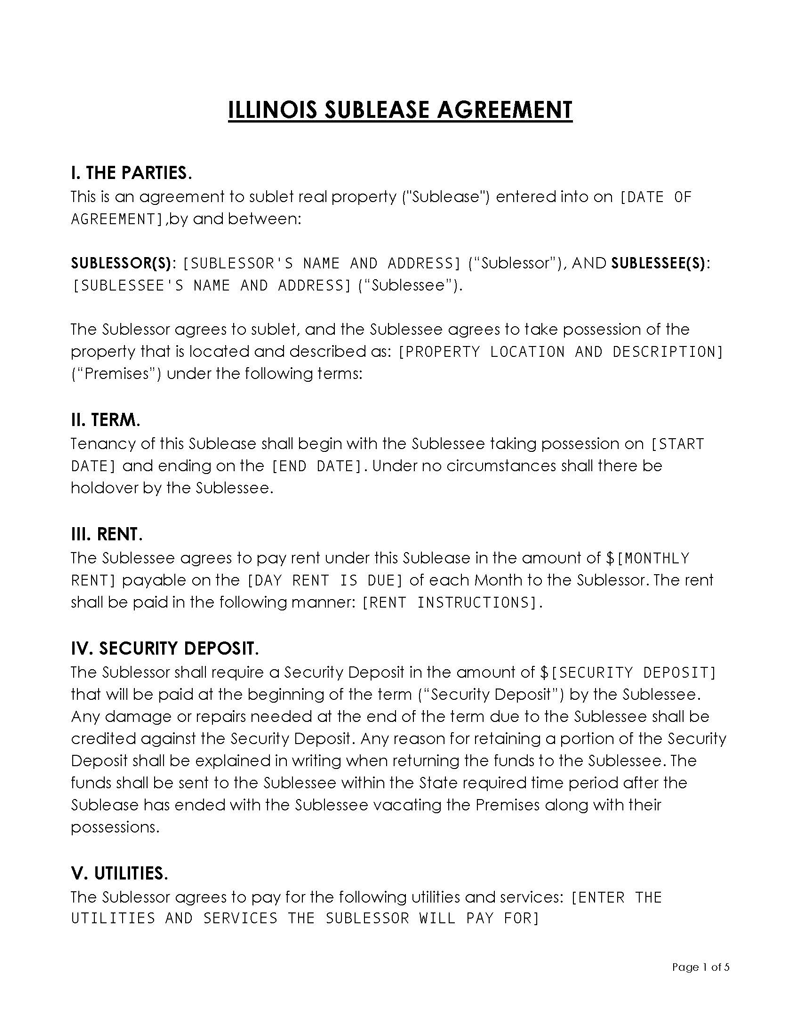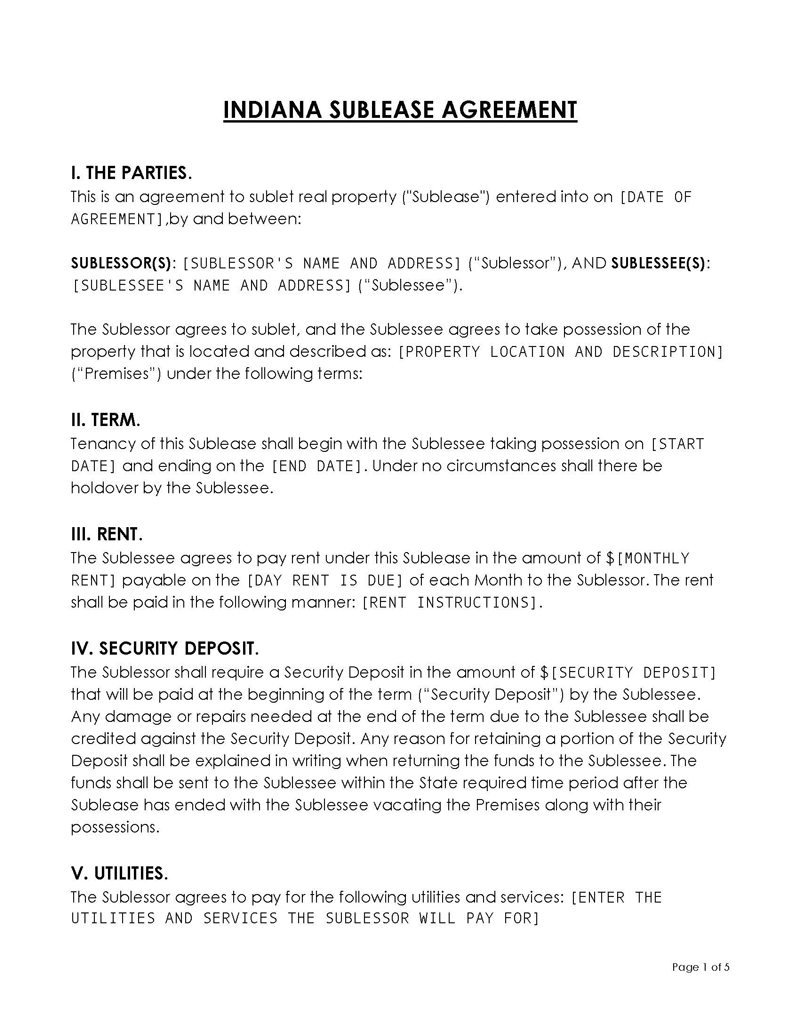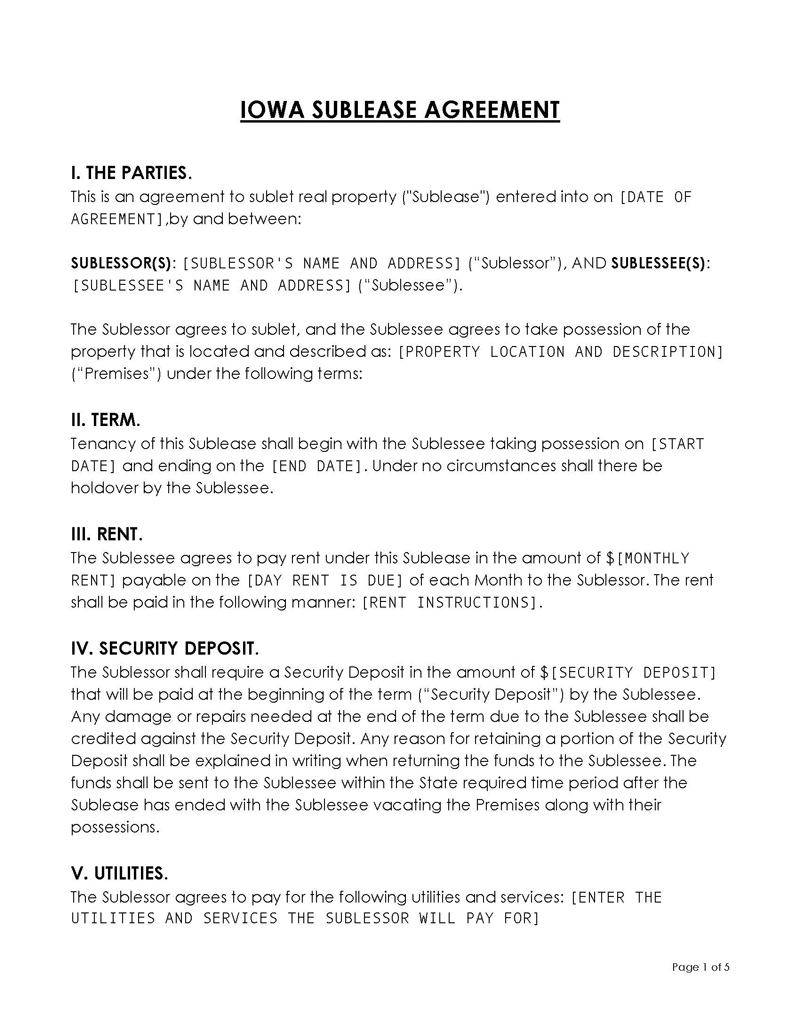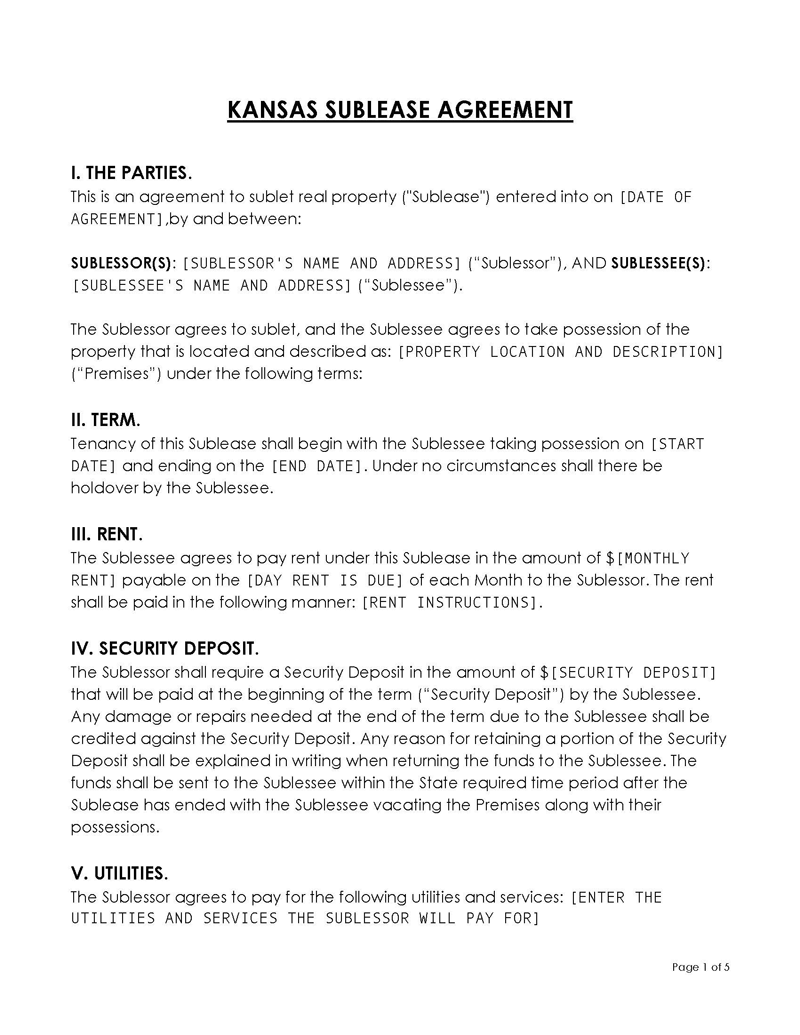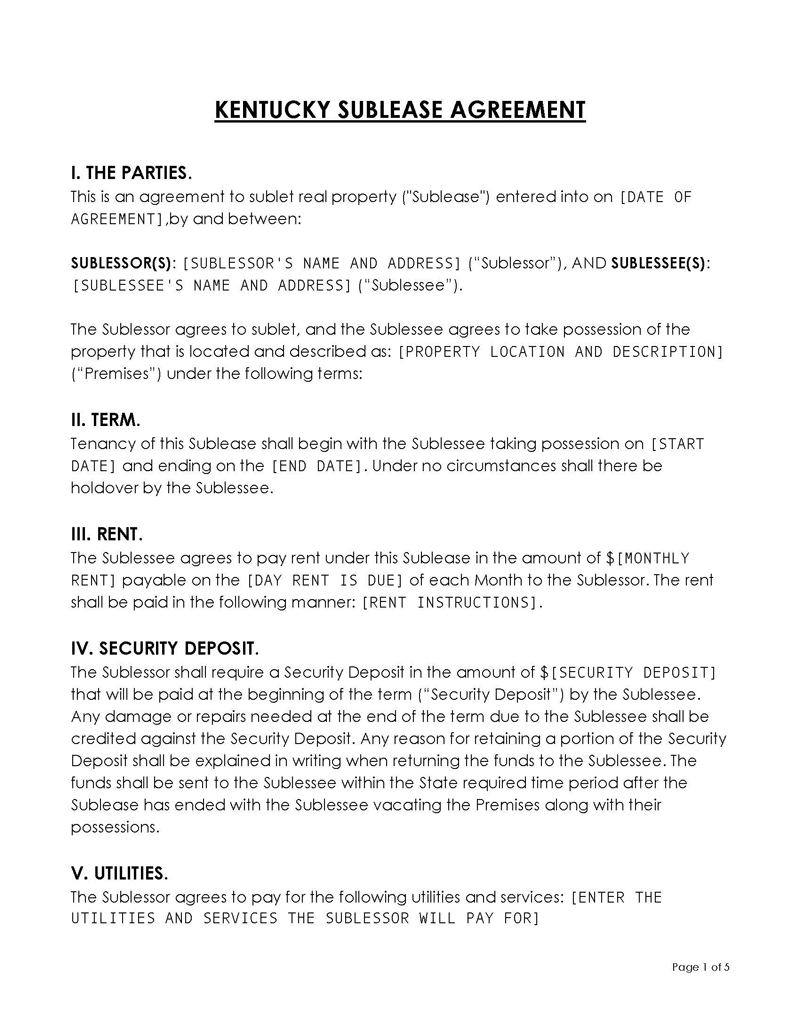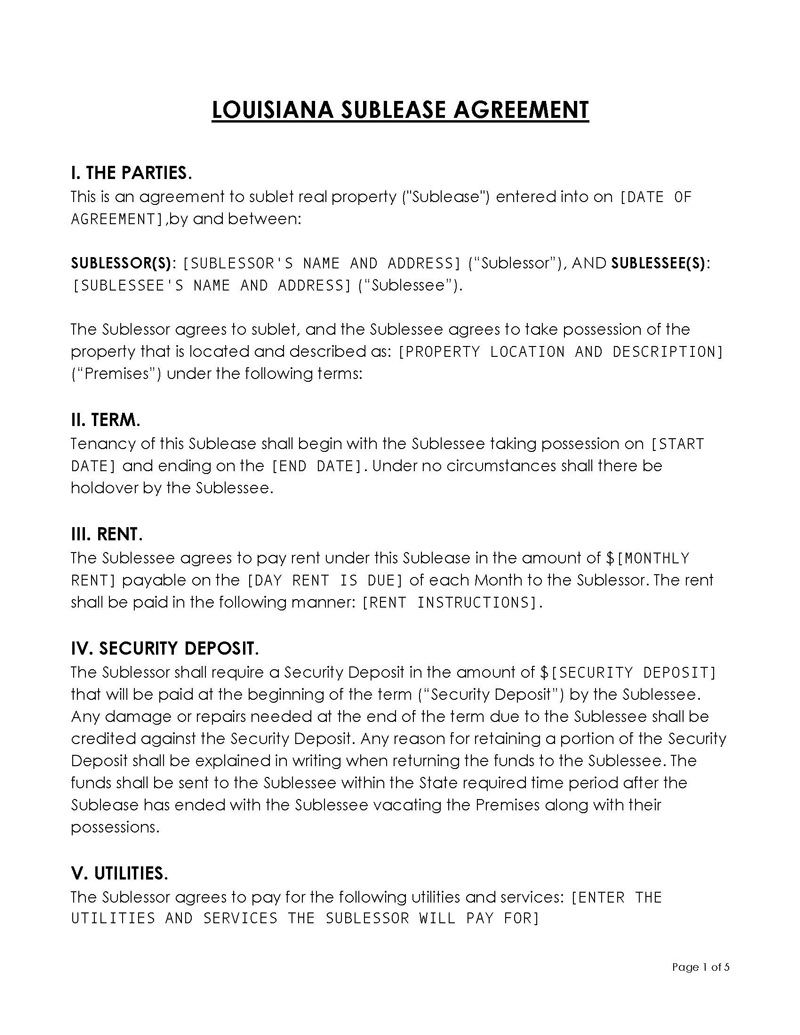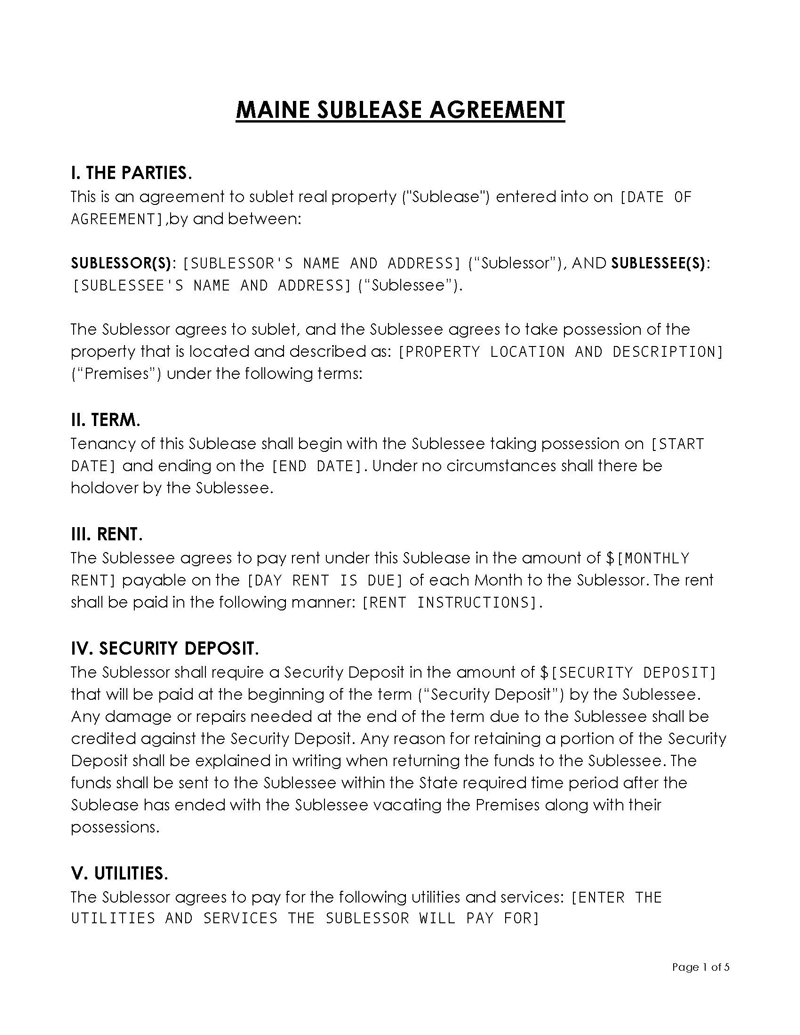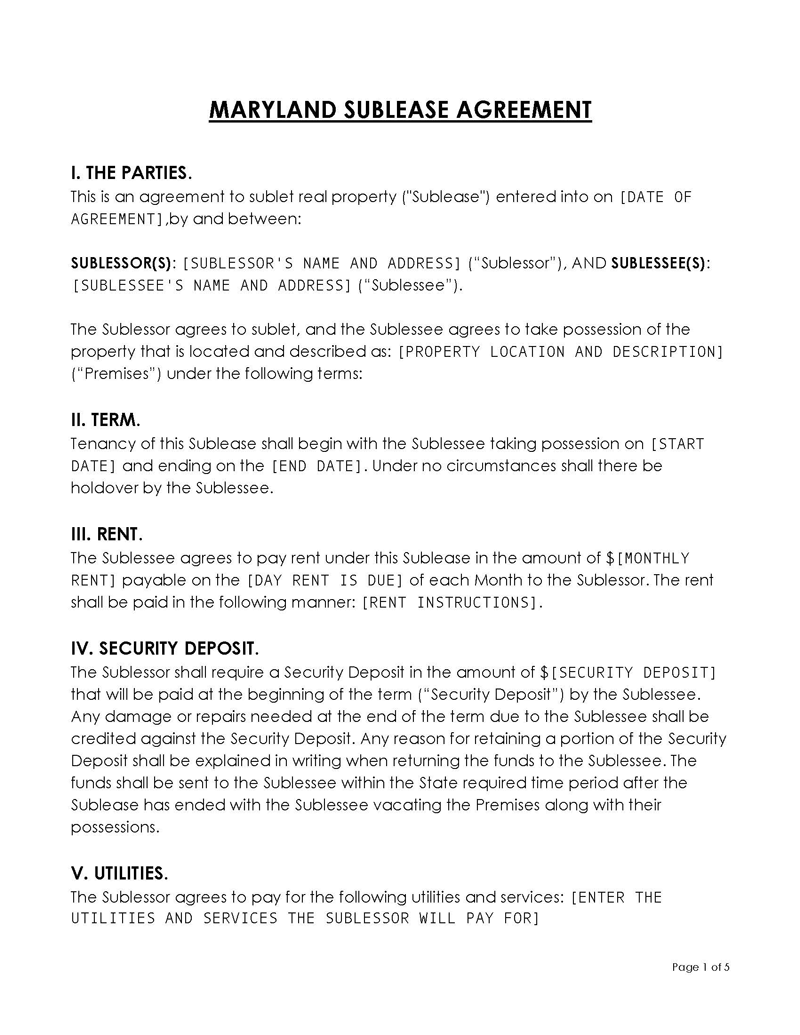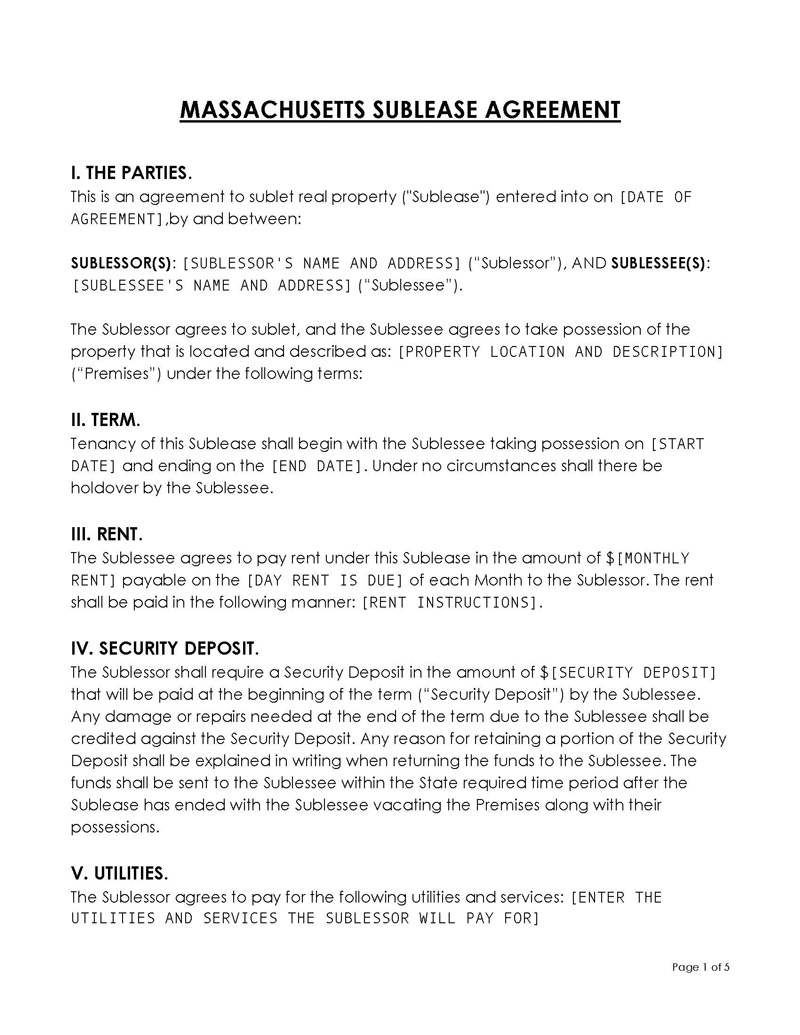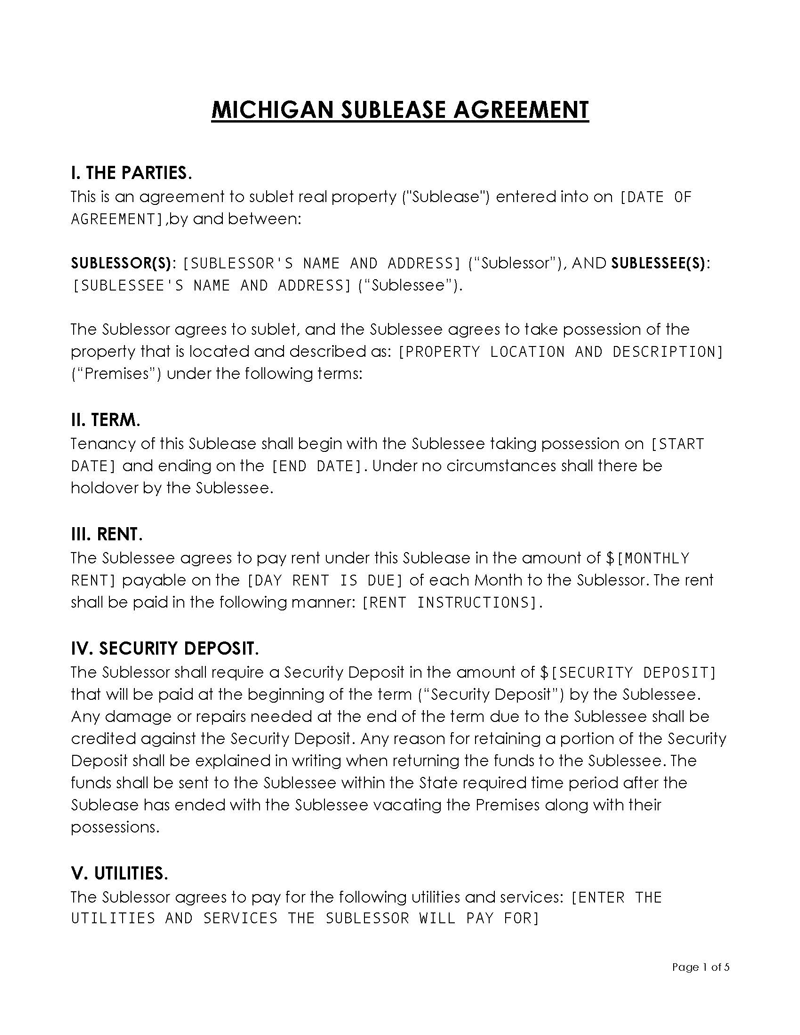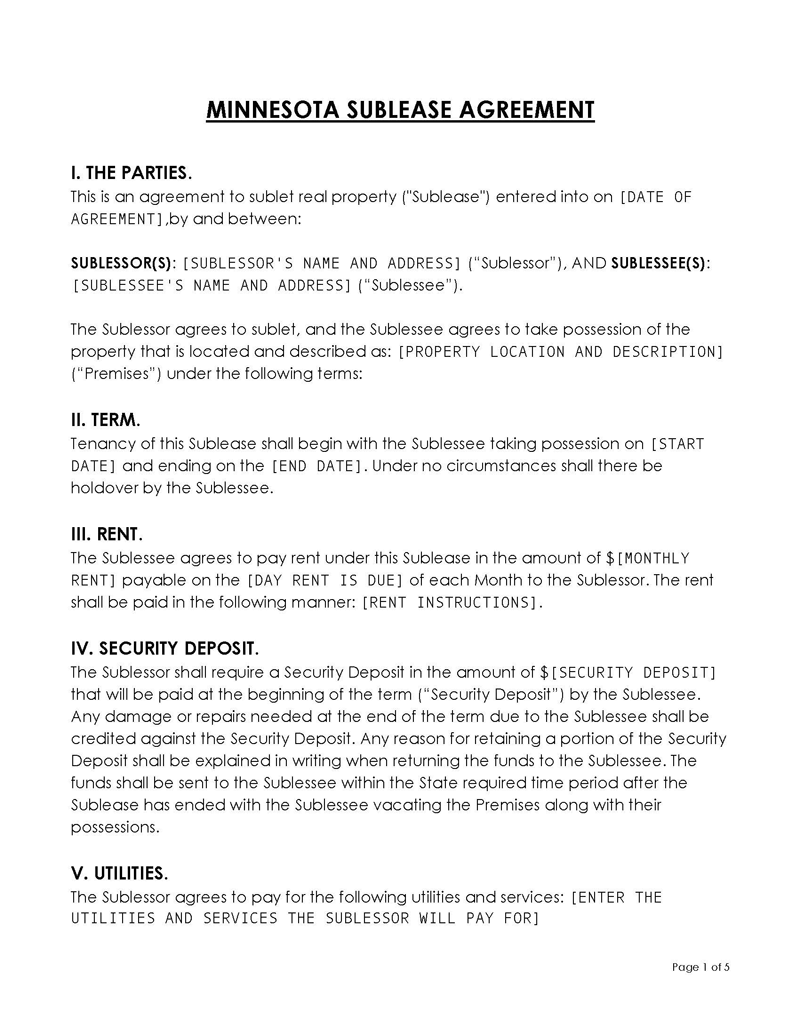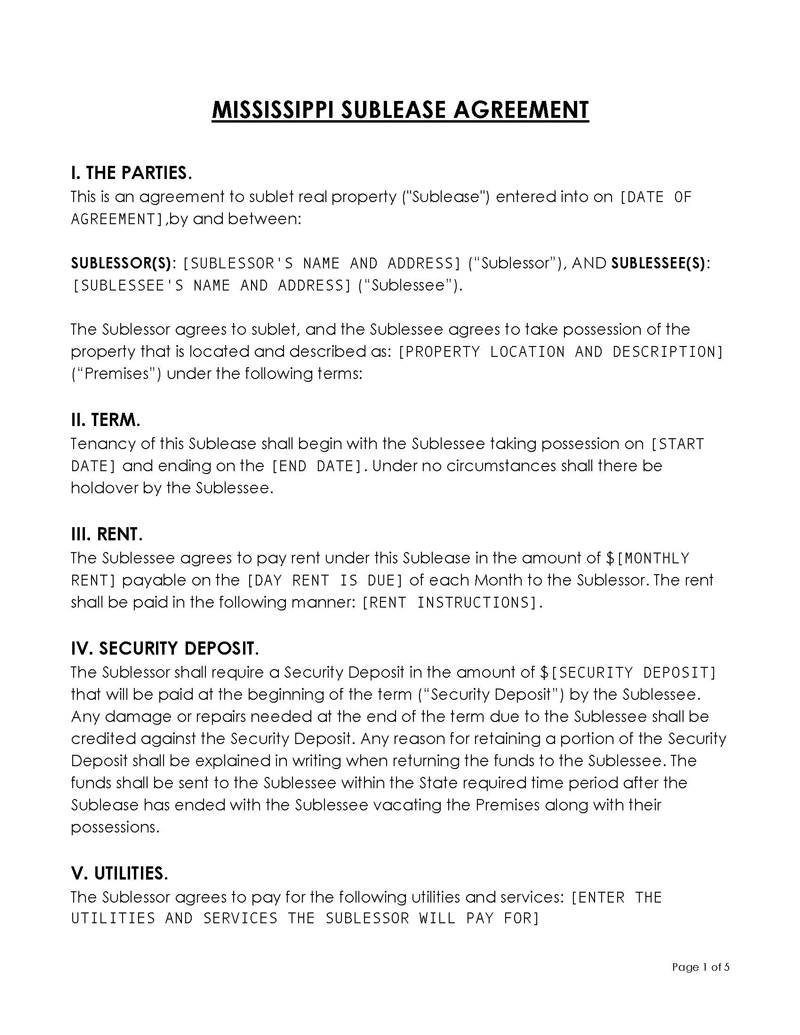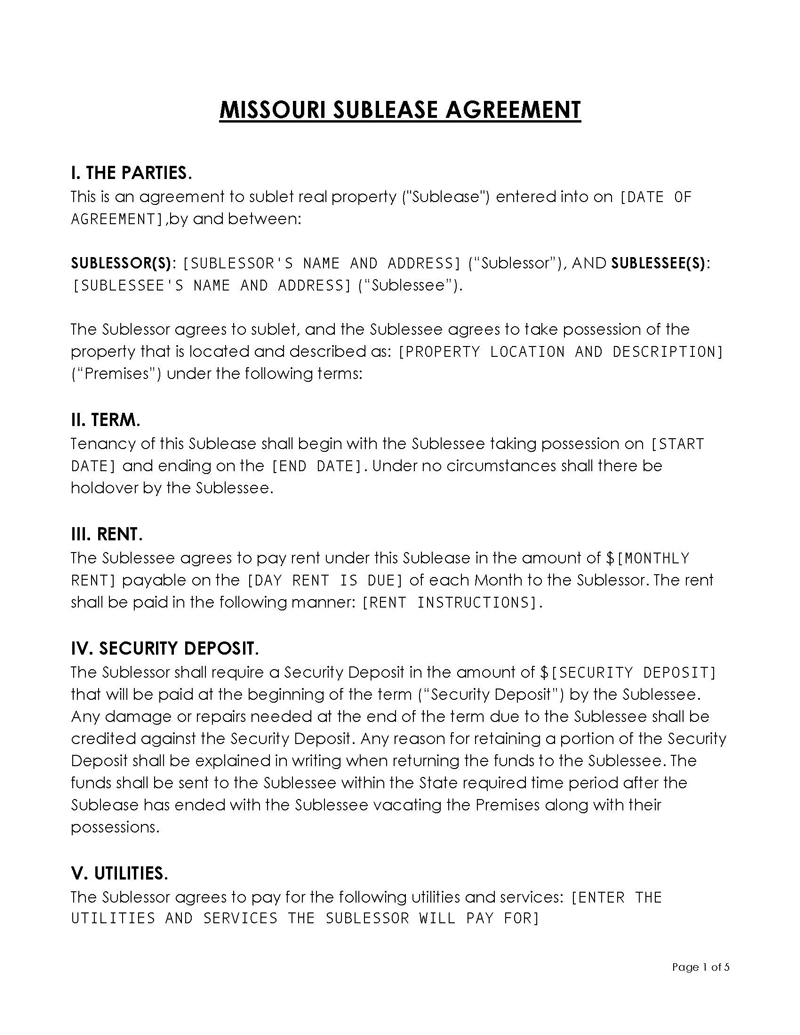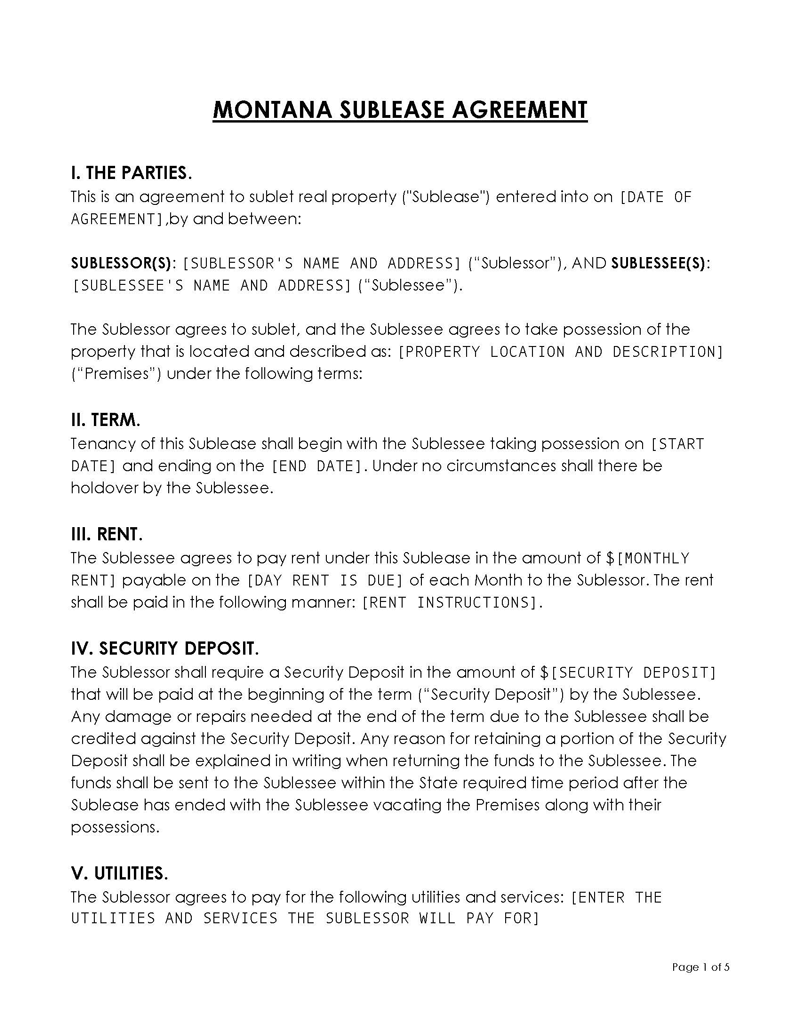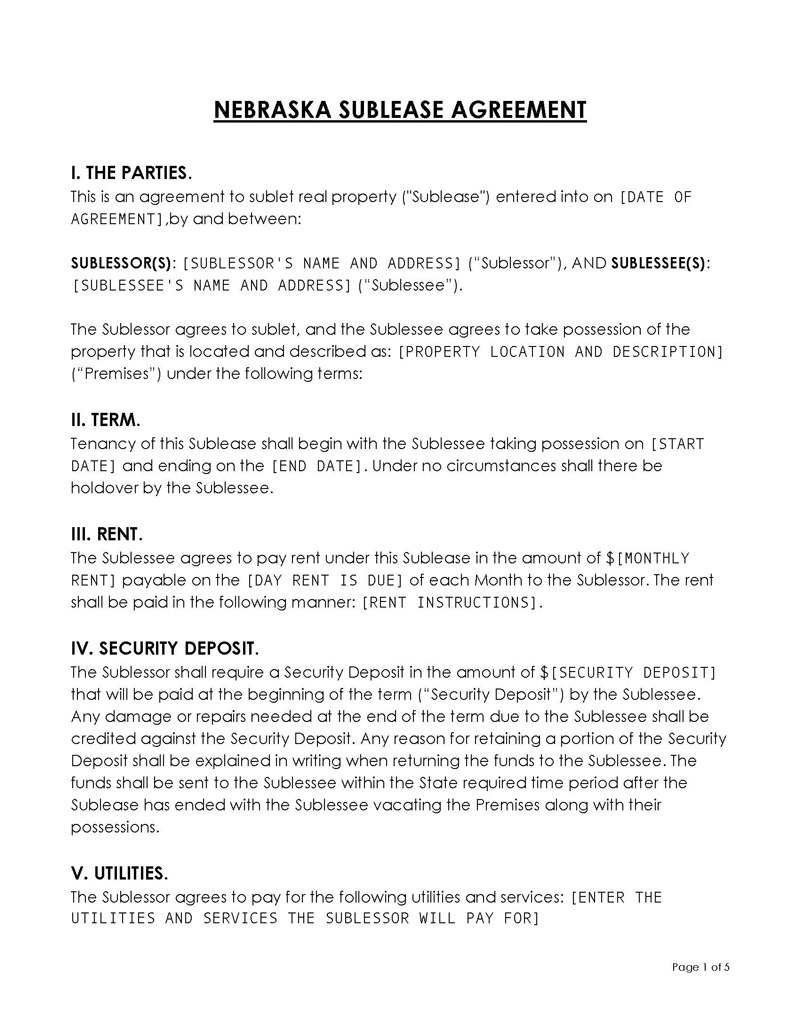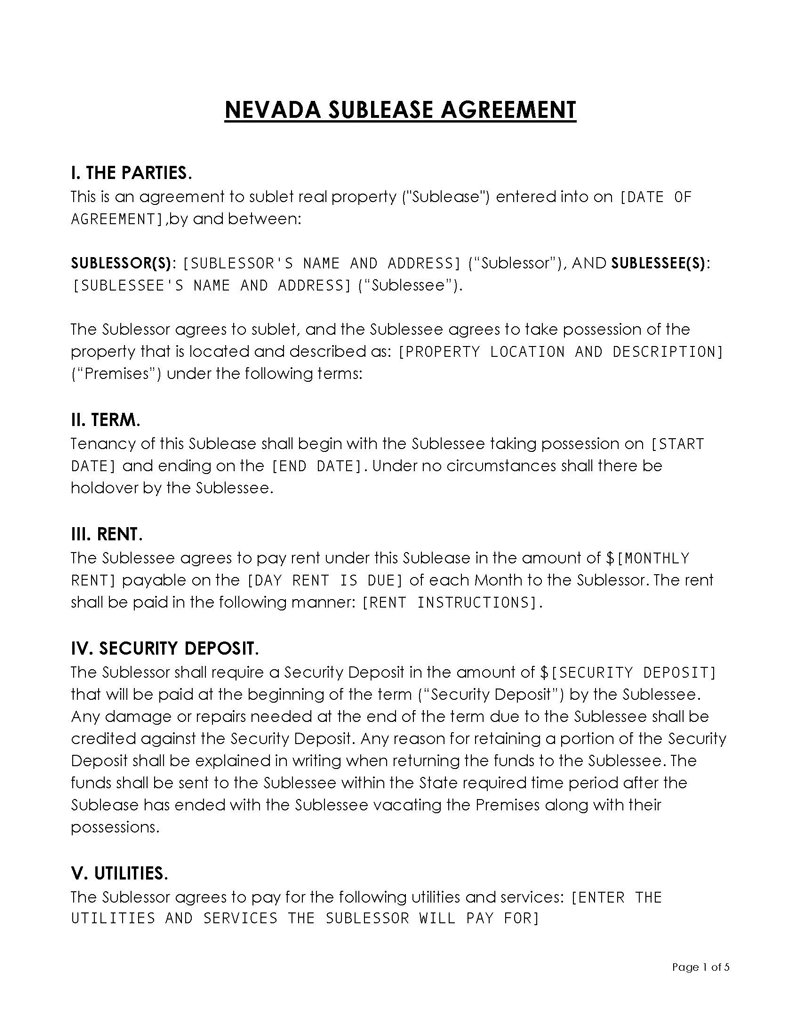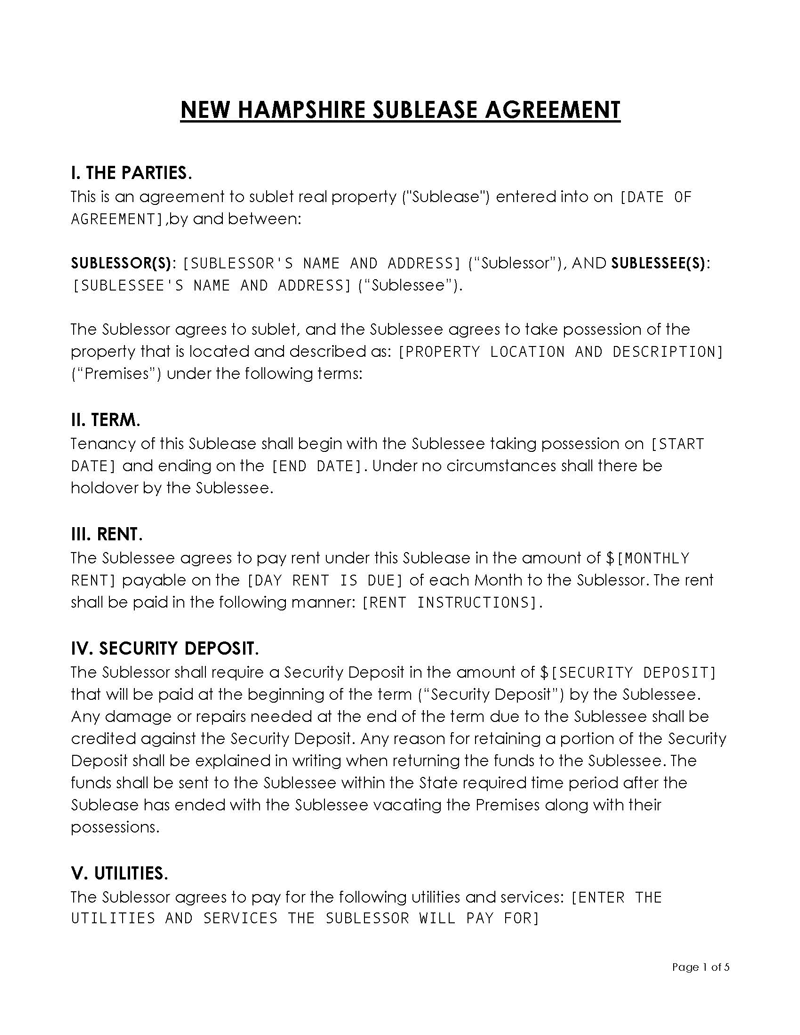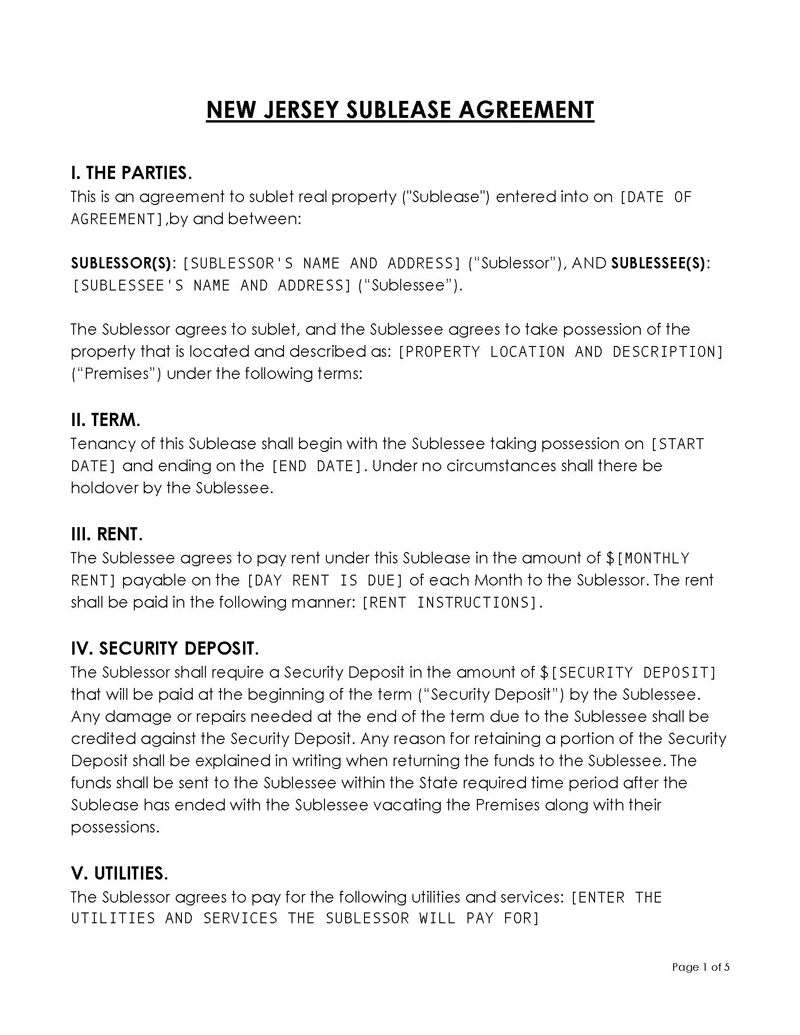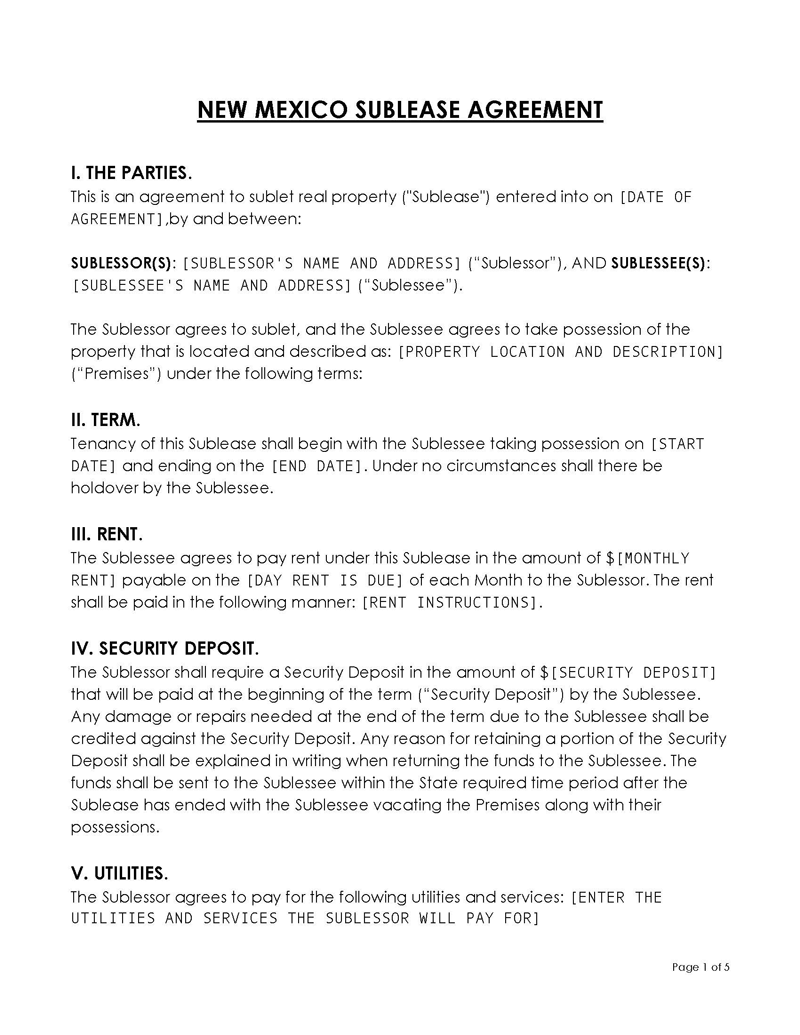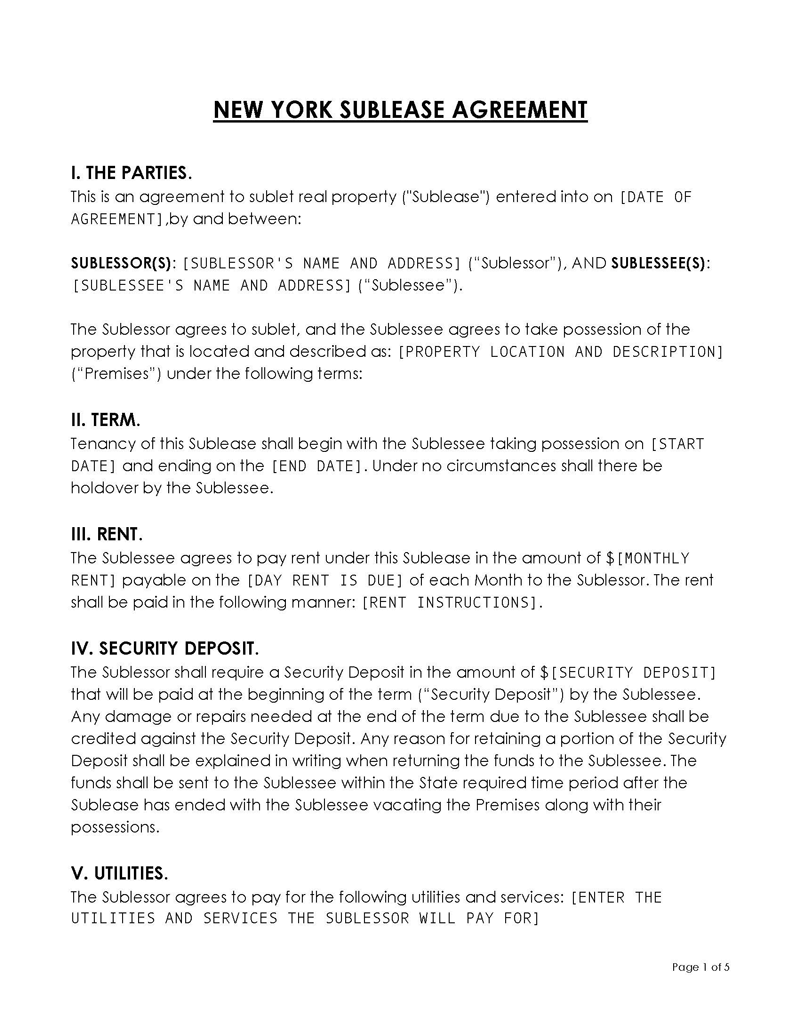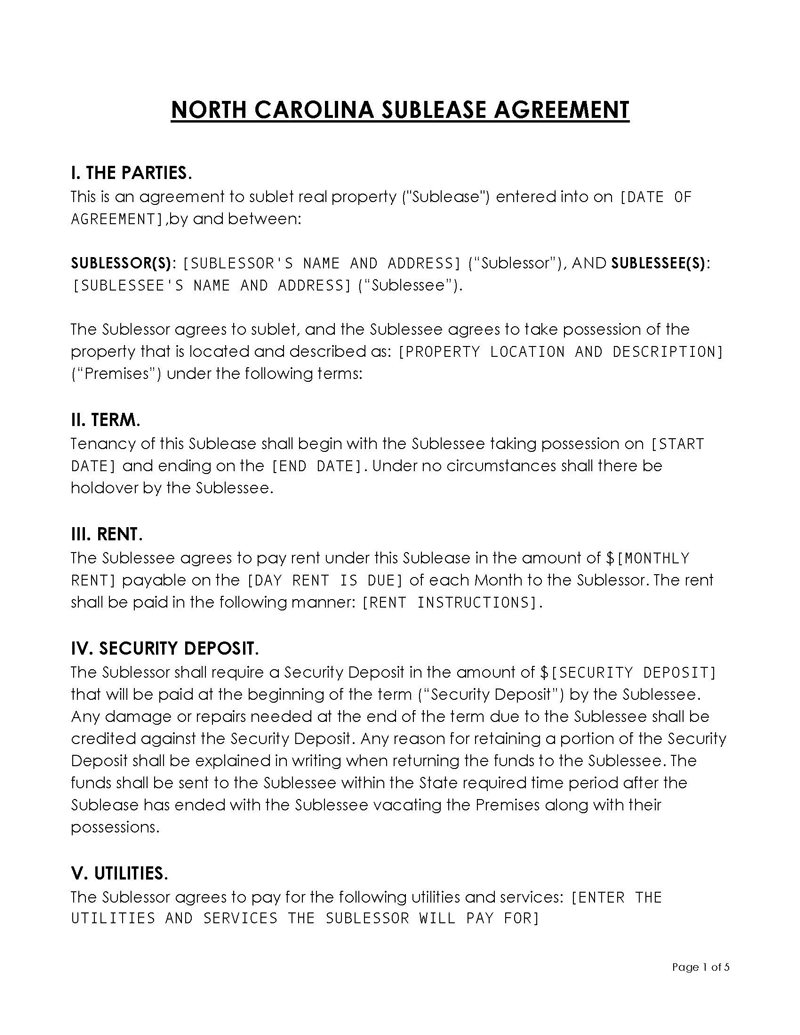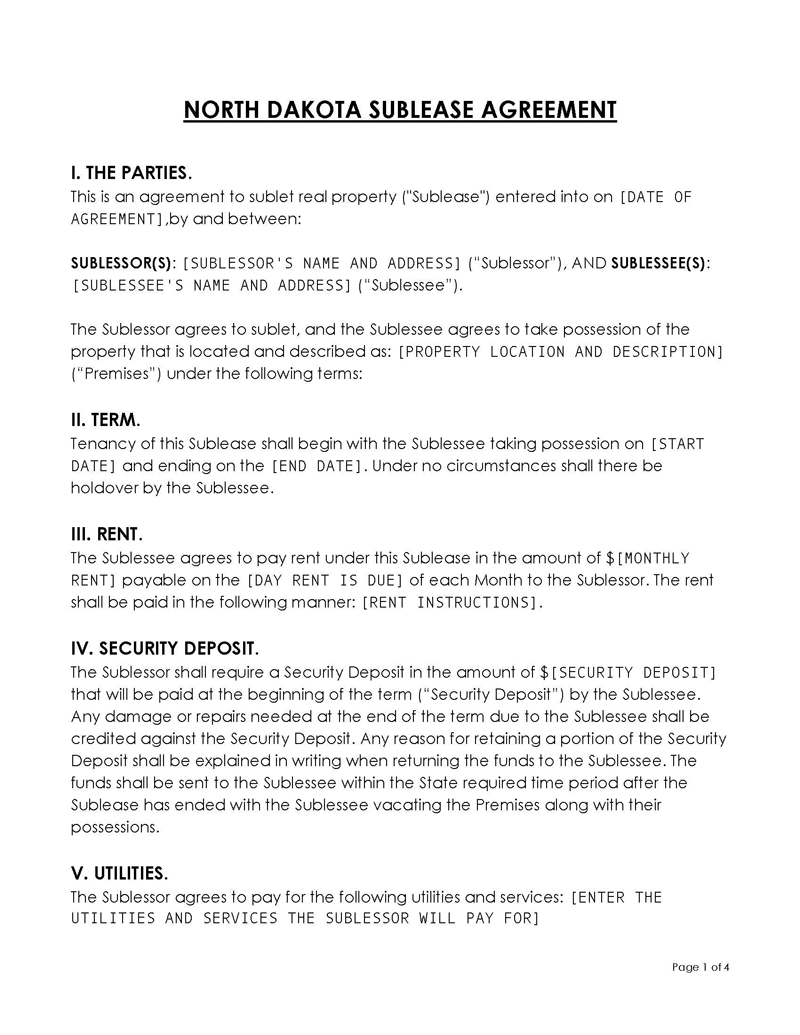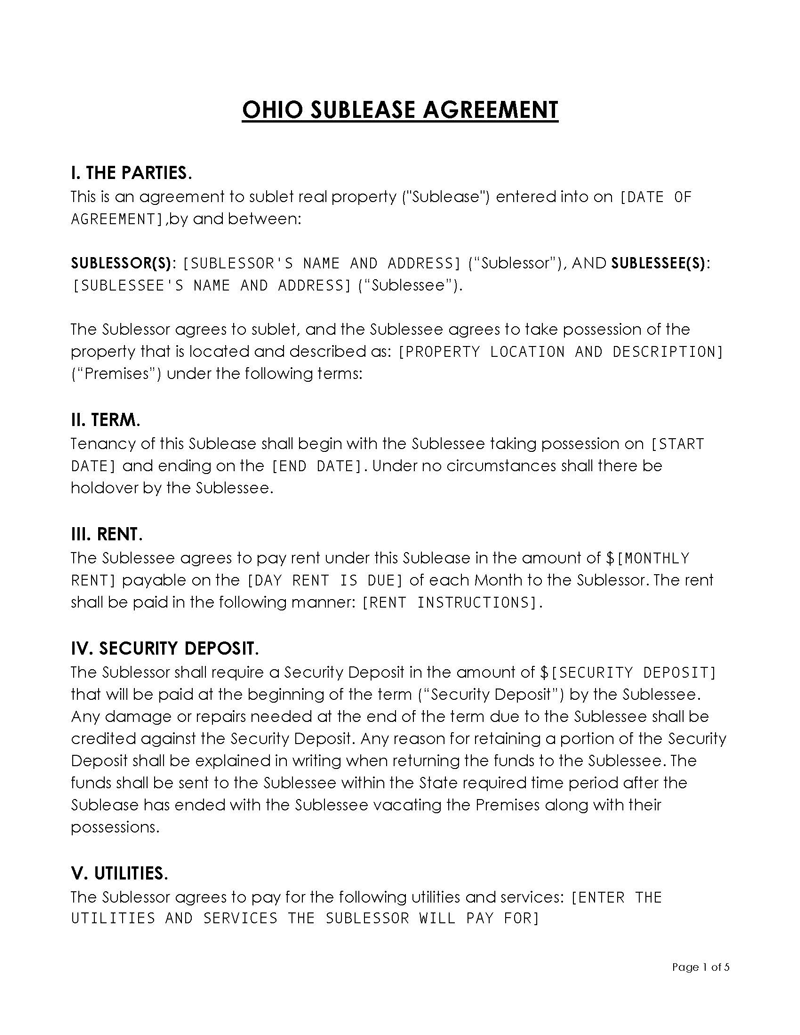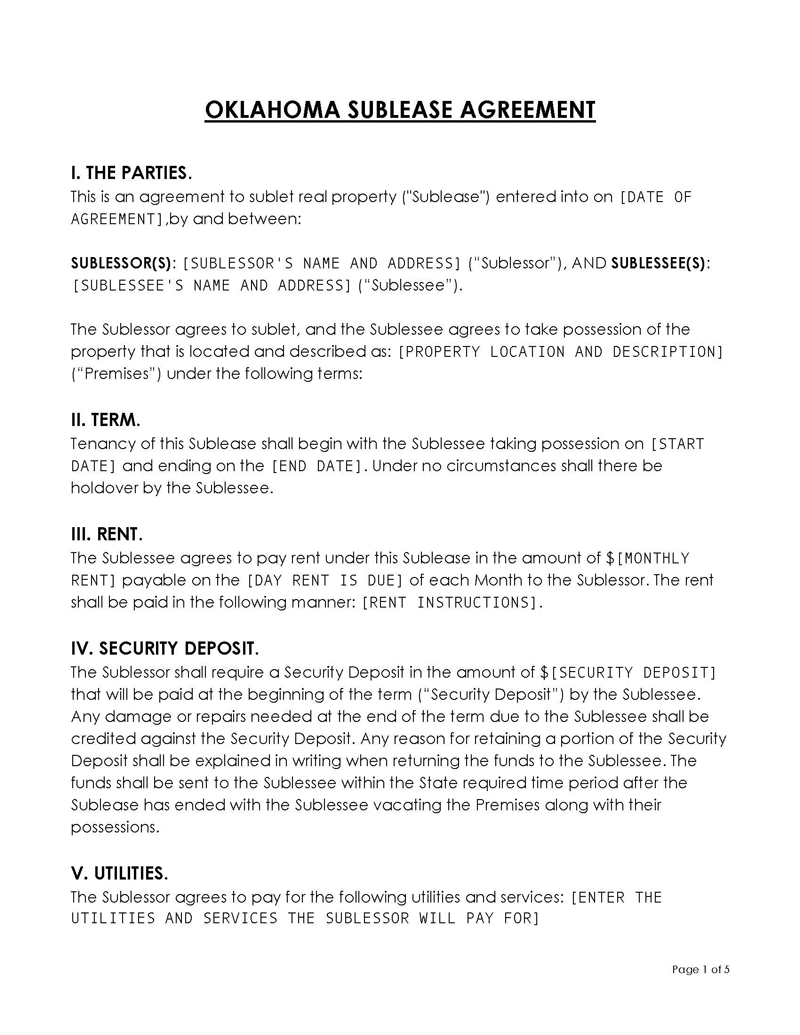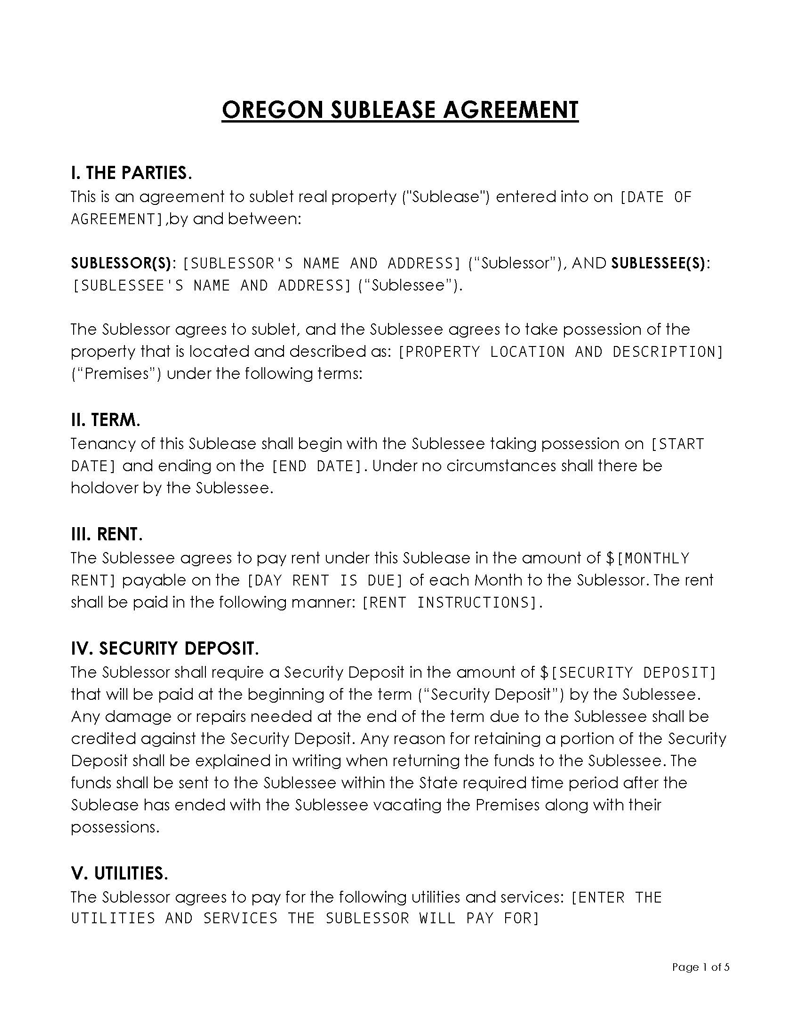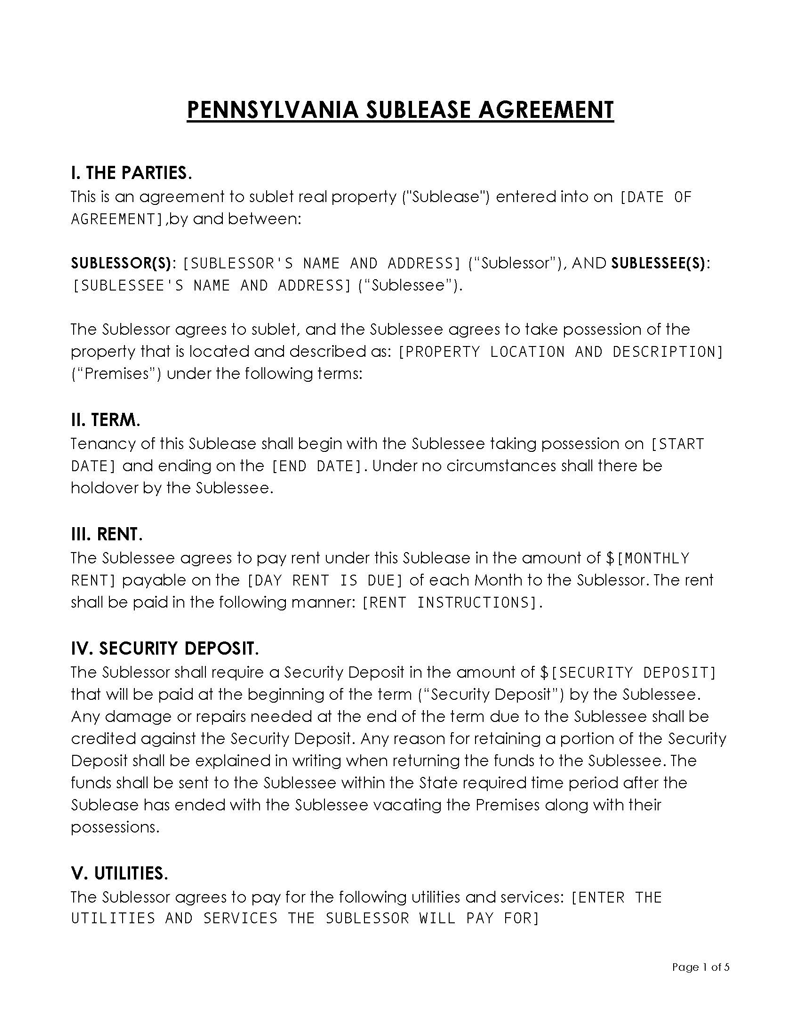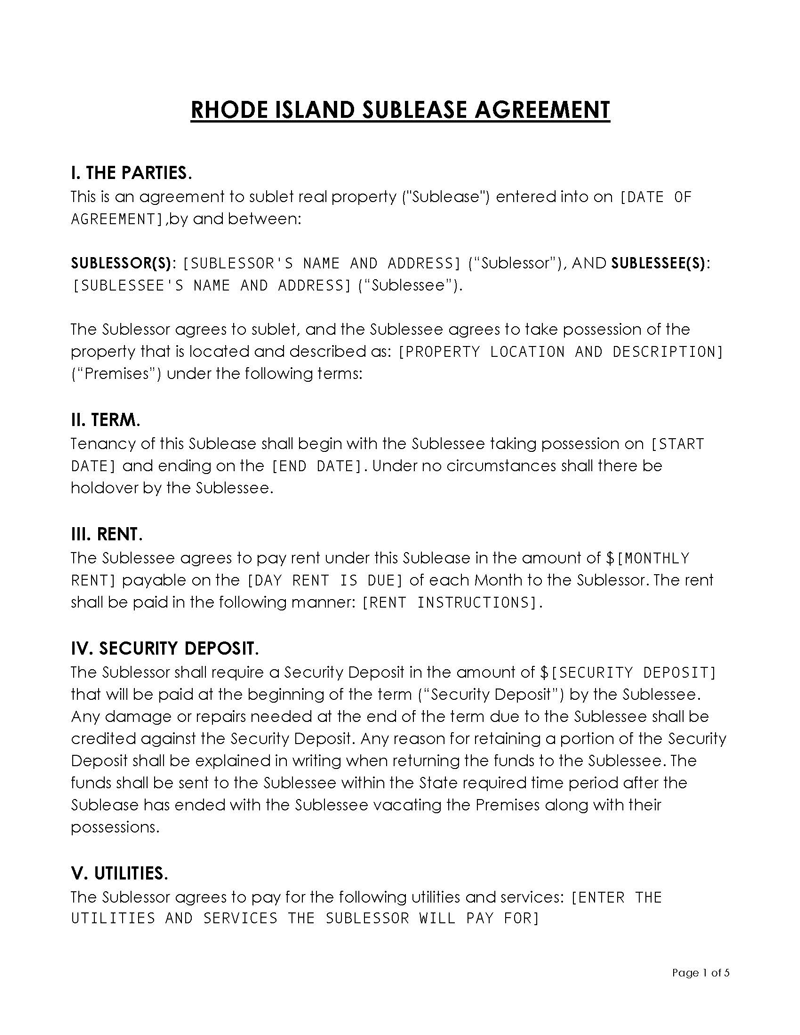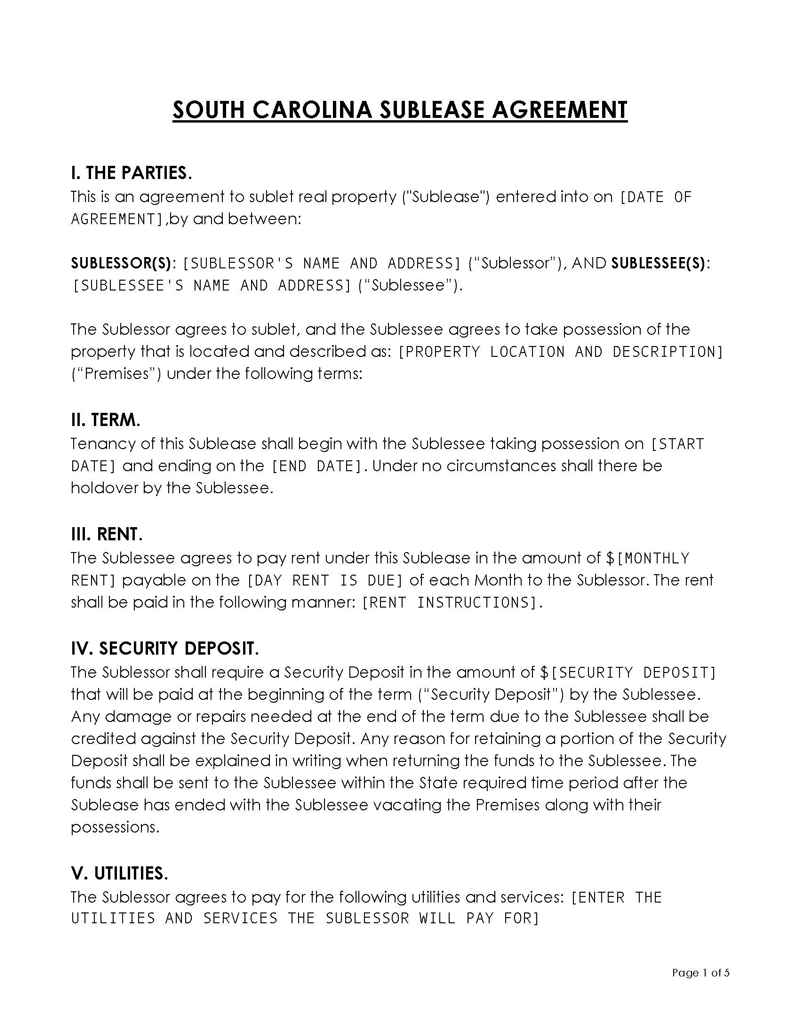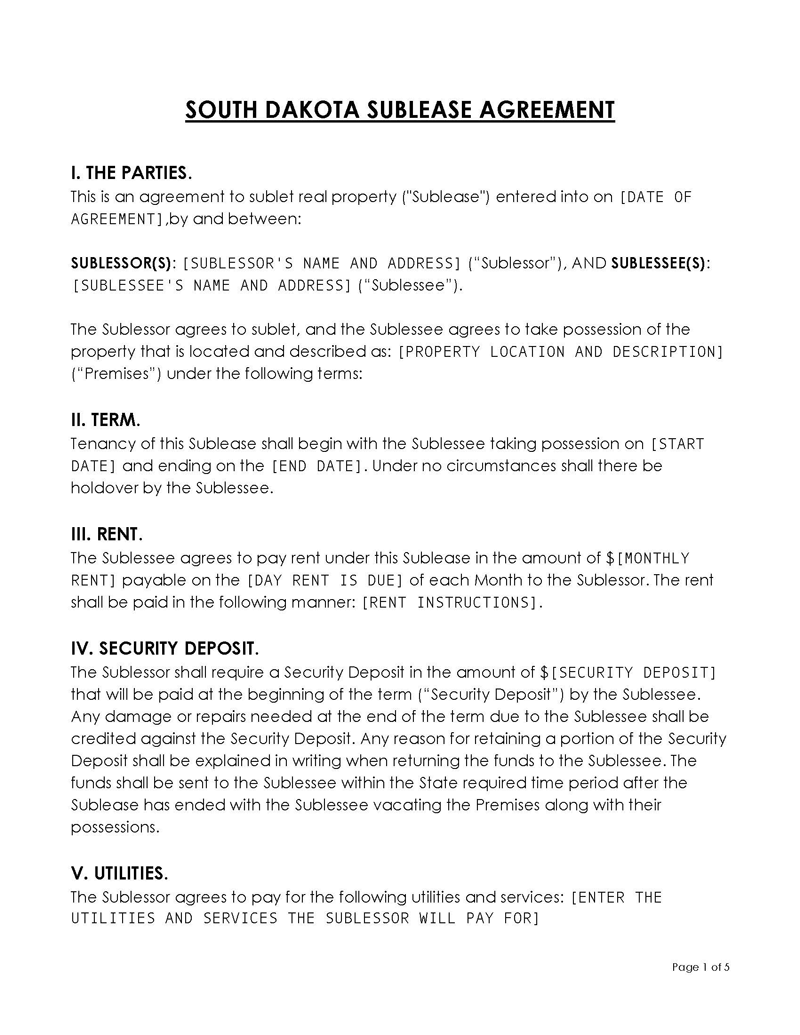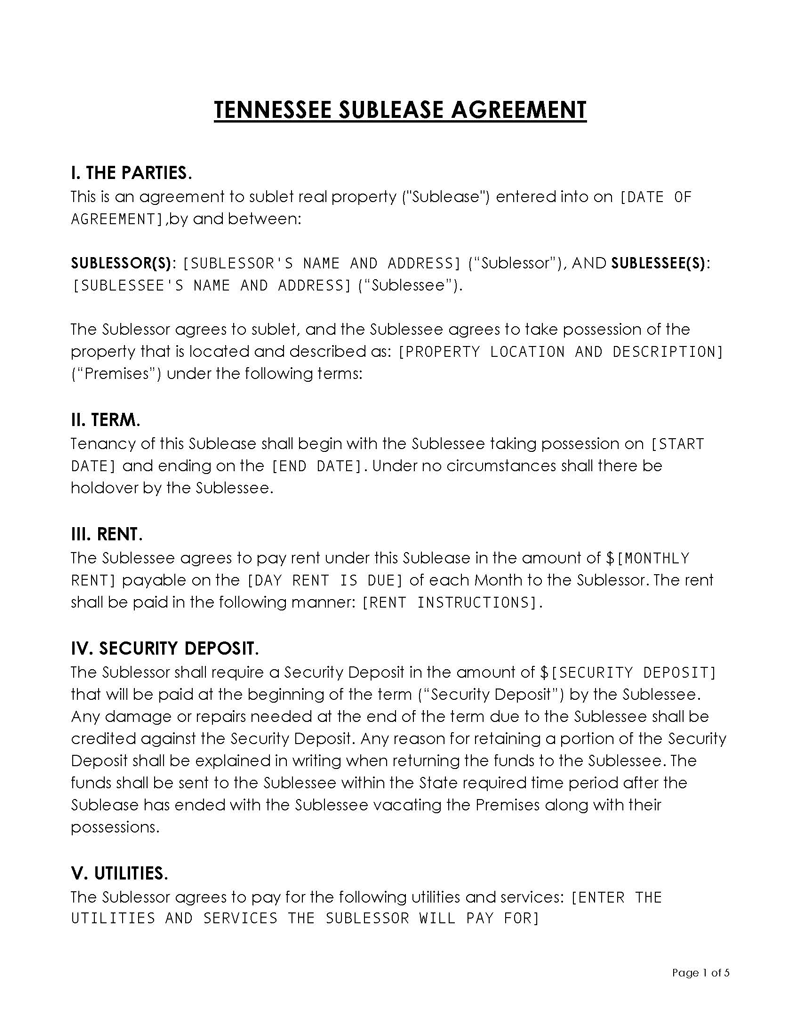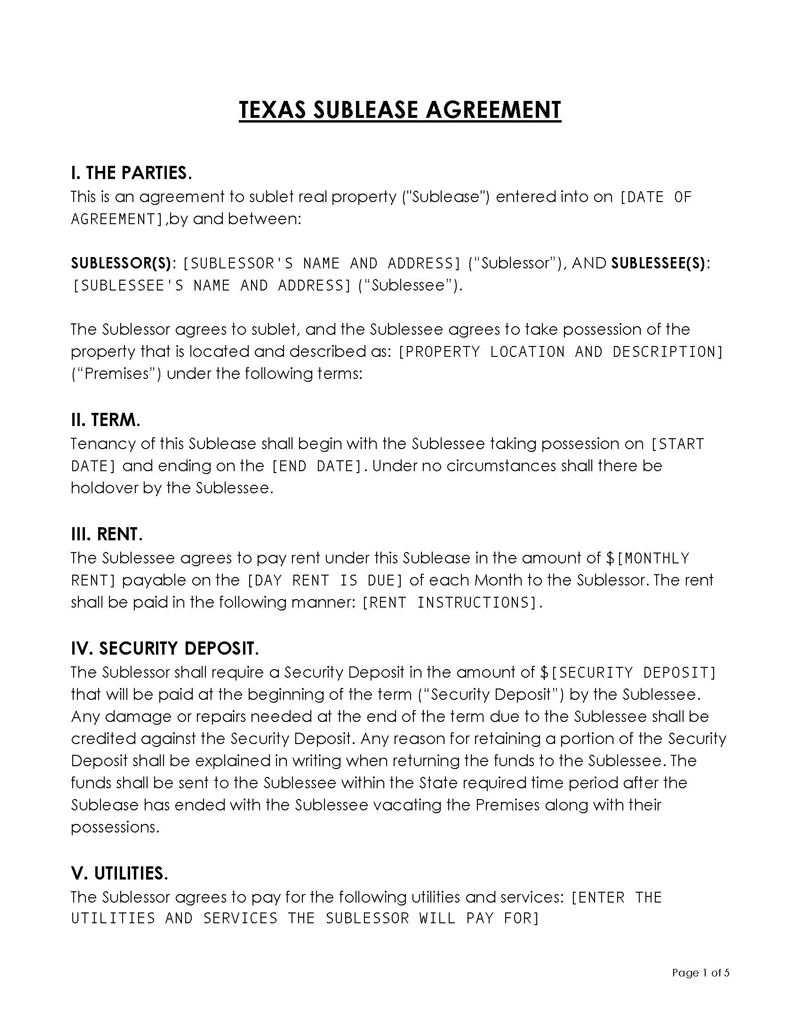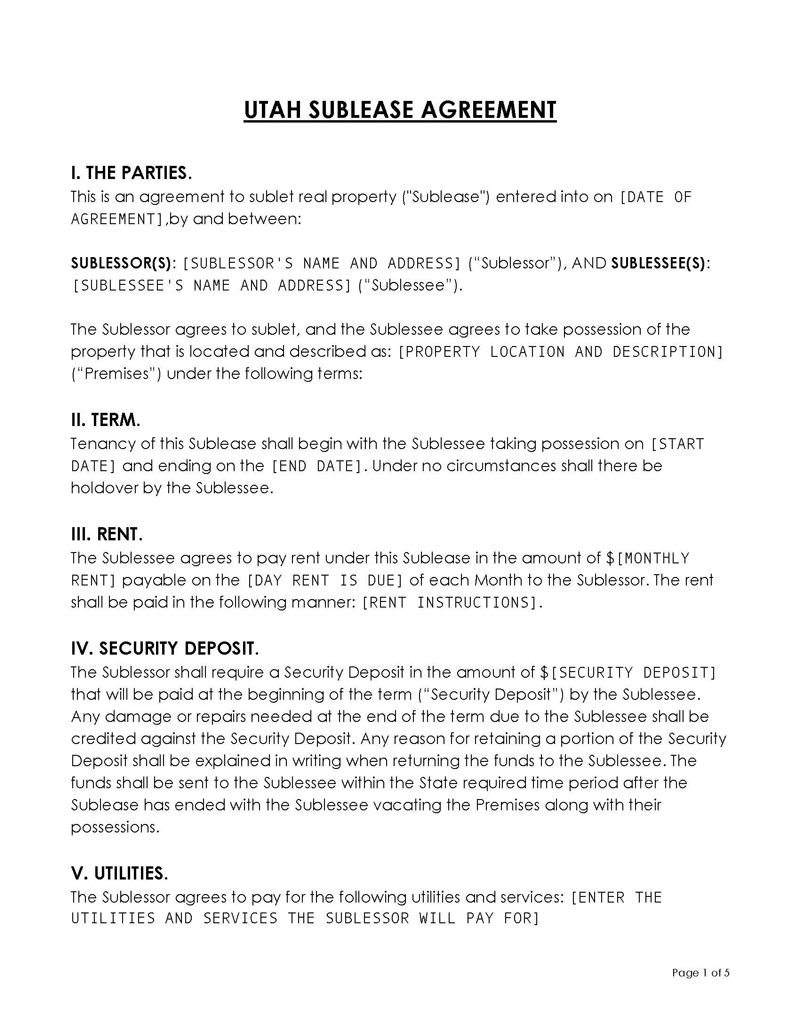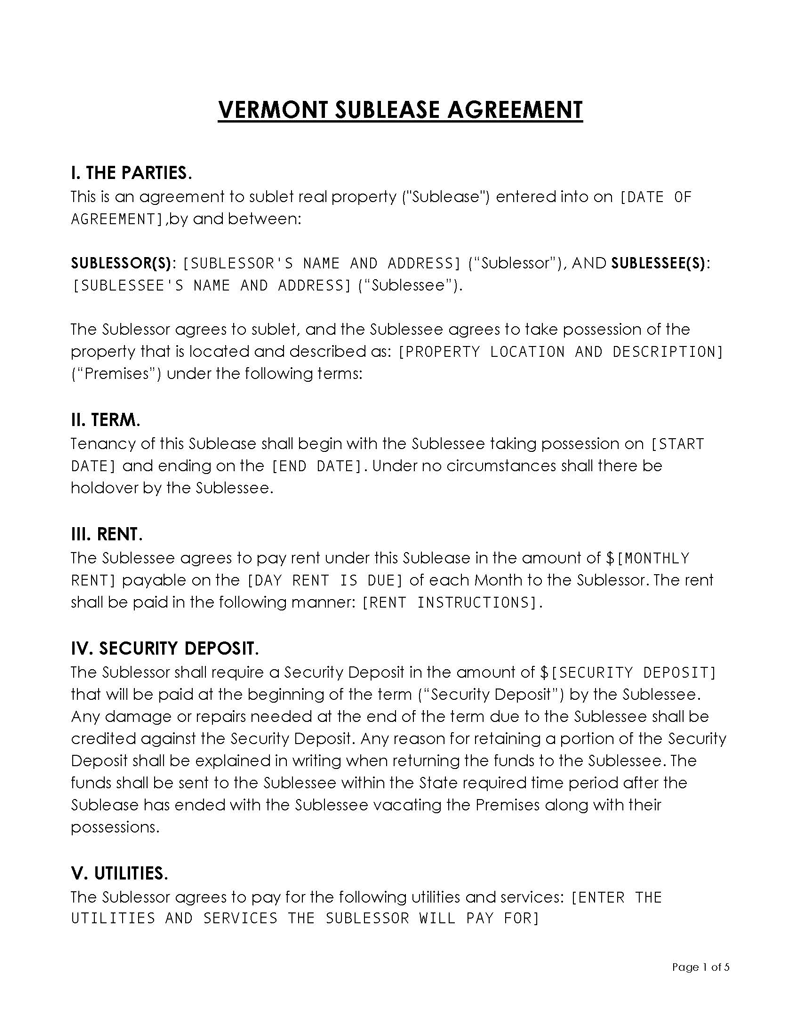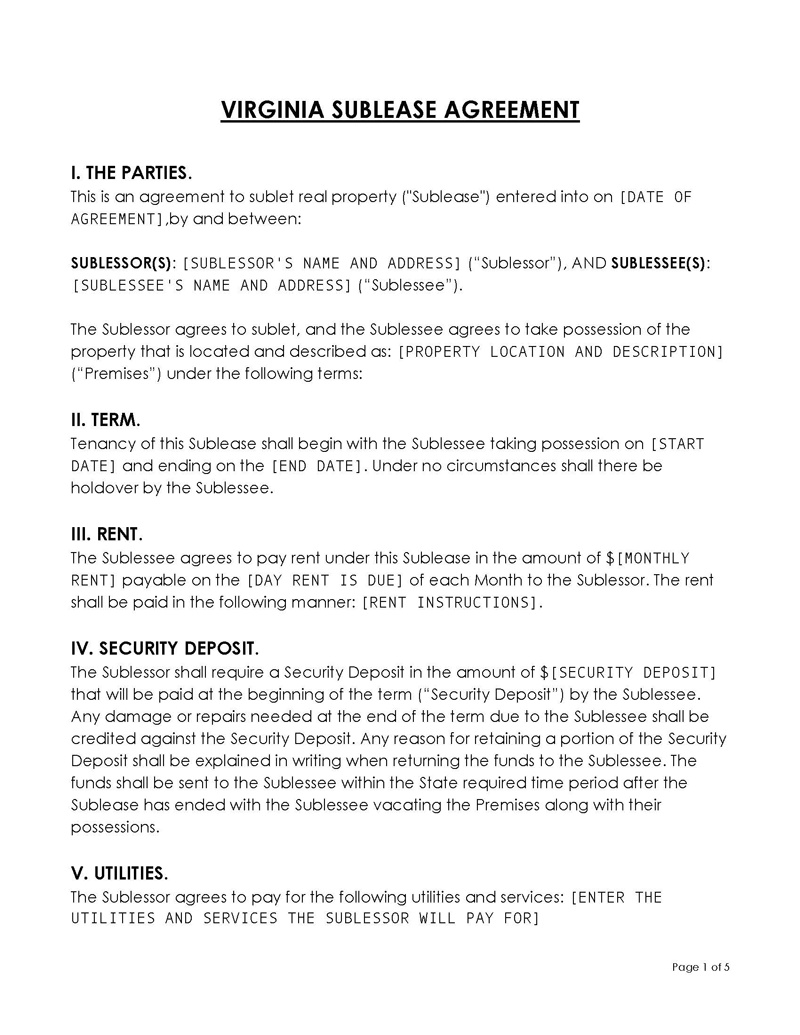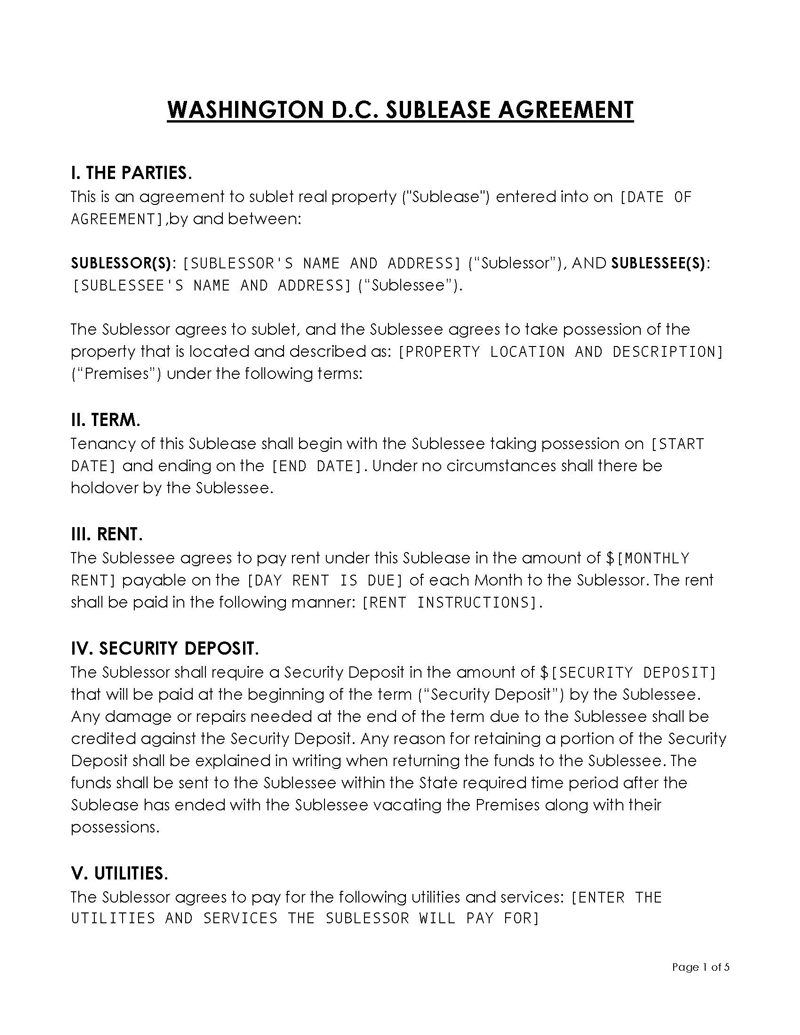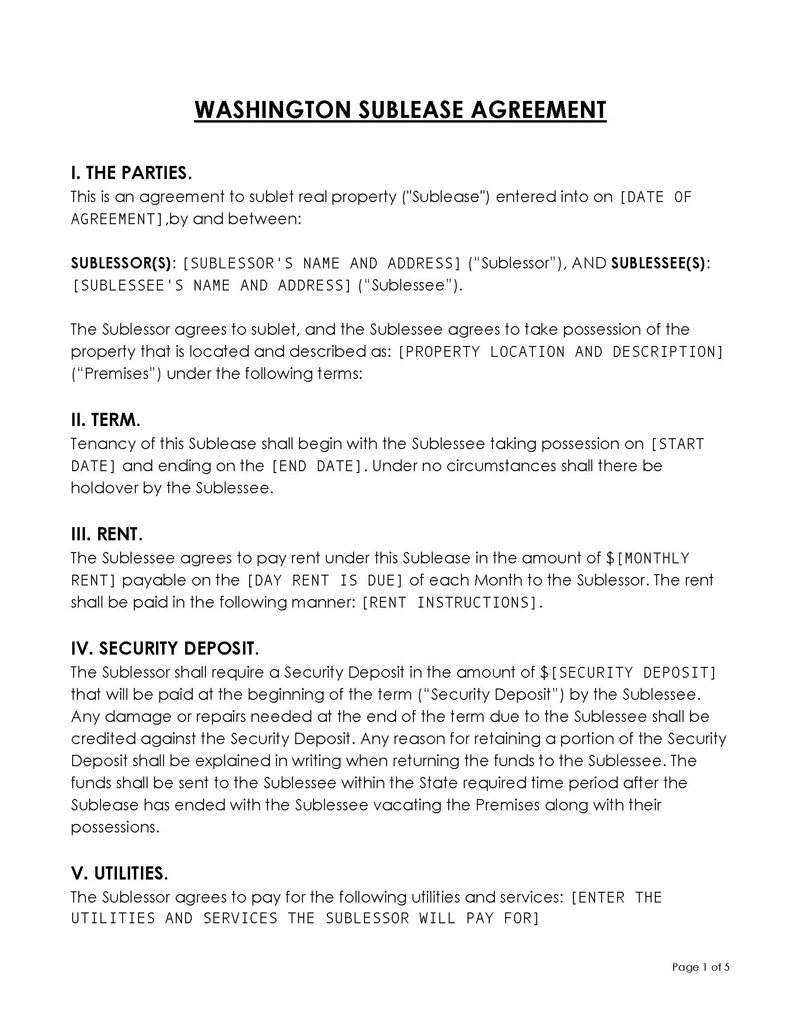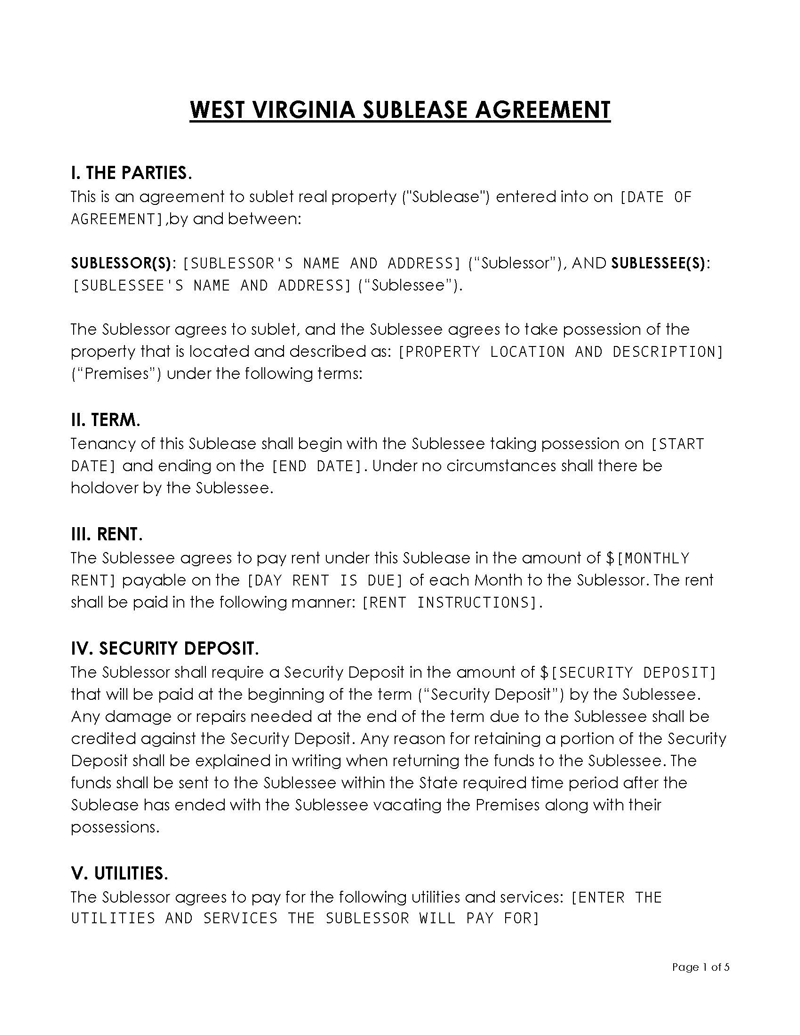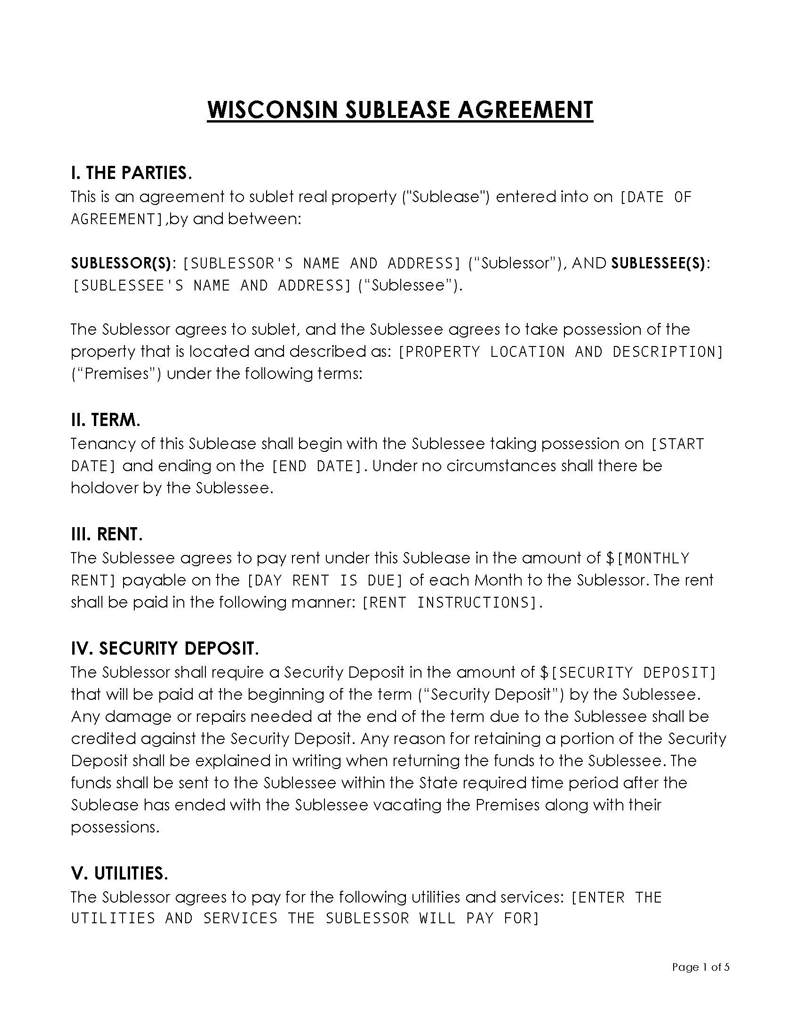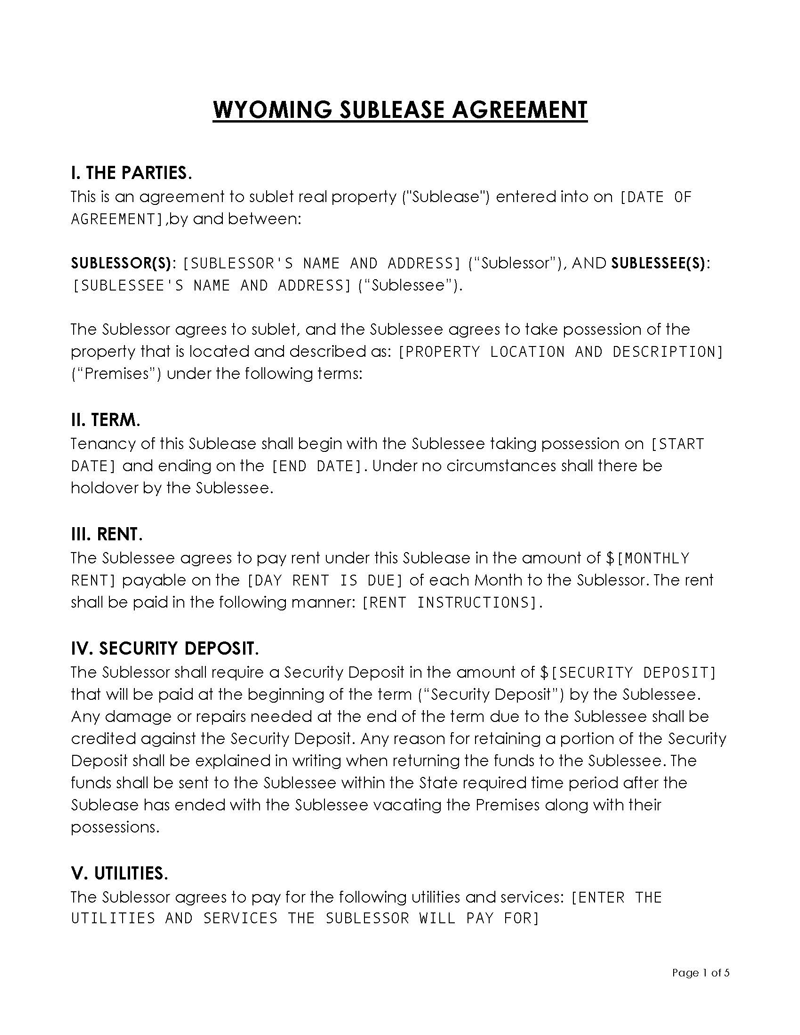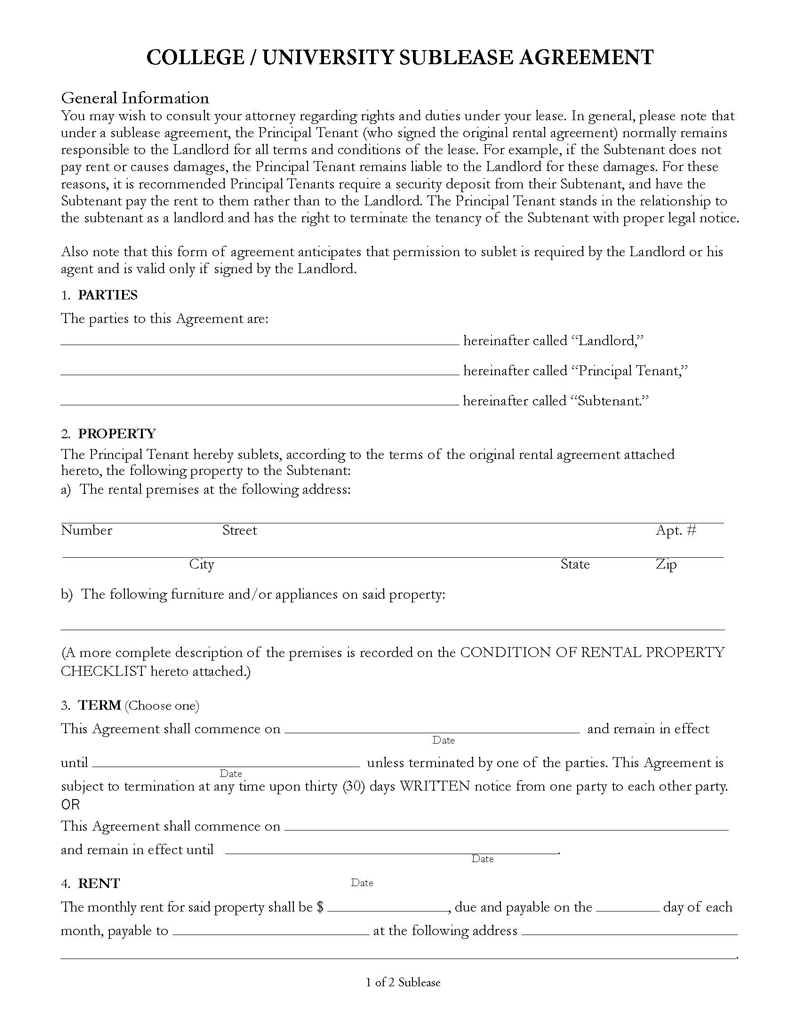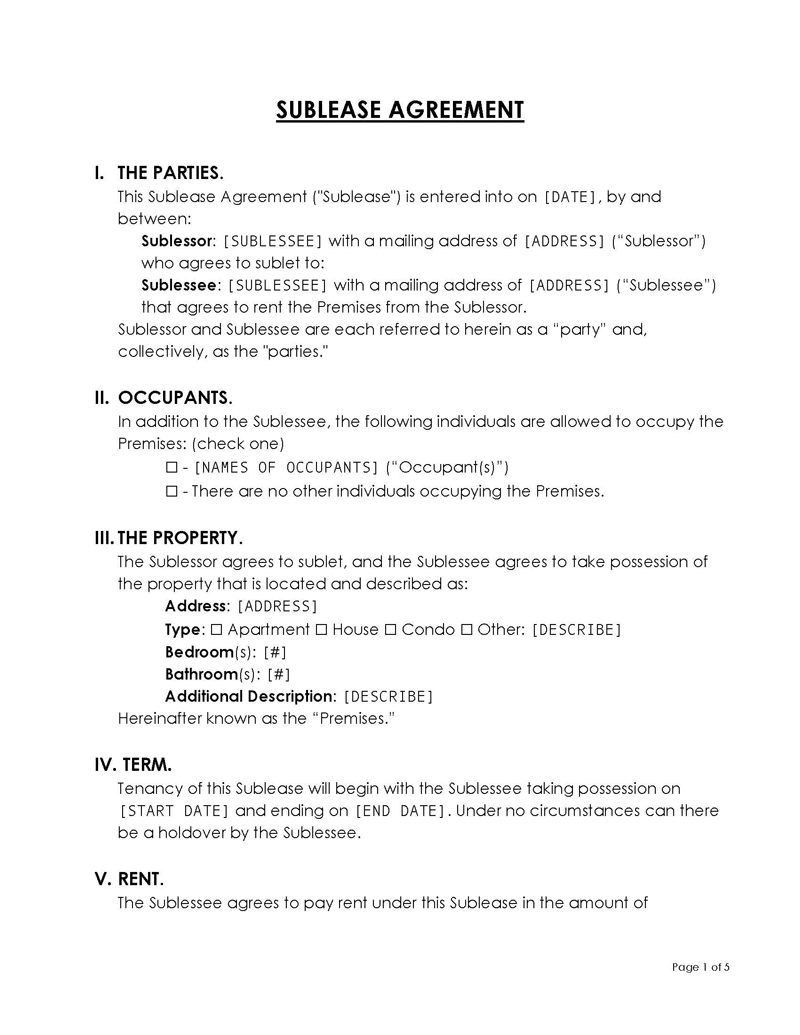You must prepare a sublease agreement if you have a rented apartment, house, or any other rental property and wish to sublet it. With this document, you will have a written contract that outlines all the terms and conditions of your arrangement with the individual you are subletting to. A sublease agreement is like having a lease within a lease; this means that you, as the original tenant, have an agreement with the landlord, and the other individual has a contract with you.
Whether it is an entire rental property or part of it, it is best to have this contract when you are subletting. Remember, you will remain responsible for the conditions in the original lease, while the individual you are subletting to becomes responsible for the conditions in the sublease agreement.
Sublease Agreement Templates
As an original tenant, if you want to sublet the rental property you are leasing, ensure that you prepare a proper sublease agreement for the subtenant to sign. To ensure that you include all the information required to make your sublease complete and legal, it is best to use a sublease agreement template.
You can access these templates on our website today. Our sublease agreement templates vary from state to state, ensuring that you will use the proper template based on your state. Also, our sublease agreement templates are easy to access, free to download, and can be customized to fit your contract needs. Access and use our sublease agreement templates for your ease!
In this article, you will learn more about a sublease agreement, when and why you should use it, and the type of information that must be included in the contract.
What is a Sublease Agreement?
A sublease agreement is a document that acts as a contract between an original tenant of a rental property and an interested party known as a subtenant, who will be required to pay all or part of the rent.
With this agreement in place, the existing tenant cannot lease their space to the subtenant for more than the lease period mentioned in the original (master) lease. Also, the subtenant must follow all the terms and conditions of the original lease that the existing tenant signed.
However, based on the original lease agreement, the existing tenant will remain liable for any damages, rent payment, or consequences resulting from a breach of contract. Therefore, the original tenant must notify the landlord before agreeing with the subtenant. Once the landlord agrees, the original tenant and the subtenant must sign and keep a copy of the sublease agreement. It is also crucial for the subtenant to have a copy of the master lease.
Alternative Names
A sublease agreement is also known as a:
- Sublease
- Sublease contract
- Sublease form
- Sublet contract
- Sublet agreement
- Sublease rental agreement
Who are the Parties Involved?
When it comes to the rental sublease agreement, there are two parties involved:
- First, the original tenant is the sub-landlord or the sub-lessor. This party with an original rental contract with the landlord is choosing to sublet the rental property.
- The second party involved is the subtenant, also known as the sub-lessee. This party enters into a sublease agreement with the original tenant to temporarily rent all or part of the rental property.
Note: Keep in mind that the property’s landlord is not involved in the sublease agreement.
When and Why to Use a Sublease Agreement?
Here are instances of when and why you should use a sublease agreement:
When
- You can use a sublease agreement when you need to relocate temporarily during your lease term and do not wish to end your contract early. This means you can have a subtenant who will take over rent payments until you return.
- You can also use it when you wish to terminate your rental agreement early, but the landlord rejects your plea. This way, the new subtenant can remain in the rental property until the contract expires.
- Finally, you can use the sublease agreement when you want to remain on the rental property but need to rent out a room to a subtenant who will help you with rent payments during your temporary stay.
Why
Using a sublease agreement is vital as you and the subtenant have a written contract with the terms and conditions of your arrangement. This way, both parties know what is expected from them during the sublease period. Also, the contract will outline the obligations of the original tenant and the subtenant, preventing future misunderstandings over rent payments, maintenance issues, and damage liability.
Type of property which can be sublet
Different types of rental property can be sublet provided the landlord agrees to the arrangement. They include the following: an apartment, house, room, condo, townhouse, duplex, garage, basement, and a mobile home.
Subletting Vs. Re-letting
Subletting is the act of an original tenant renting out their already rented space to a subtenant while remaining liable to the master lease signed between them and the landlord, while re-letting is the act of a landlord renting out a rental property to another tenant once the previous tenant leaves; hence, creating a new contract with the new tenant.
Roommate Vs. Subtenant
A roommate and a subtenant are different because these two individuals usually sign two different rental agreements. When it comes to a roommate, this individual signs the original lease agreement with the landlord and shares the rental property with another tenant, who is also considered the original tenant. On the other hand, a subtenant is an individual who signs a sublease agreement and rents a rental property from the original tenant instead of the landlord, as a roommate does.
Do you know? For individuals sharing a rental space as roommates, the rental agreement to be signed in such a case is not the sublease agreement but a roommate agreement.
7 Procedural Steps to Sublet a Property
You need to follow seven steps as the original tenant when you want to sublet a rental property. These seven procedural steps are shown below:
Important: Landlord’s consent. Before you sublease your rental property, you must seek permission from the landlord, especially if subletting is prohibited in the master lease. Also, remember that a sublease cannot go beyond the original lease’s end date unless authorized by the landlord.
Gather the original lease
You need to find the original lease to confirm whether you are allowed to sublet the property. If the lease does not allow subletting, ensure that you obtain a landlord consent form before advertising the property for a sublease.
Specify the monthly rent
Once you market the property, determine the monthly rent you will charge the subtenant. You can determine this by viewing similar properties in your area to get an idea.
List the property
Proceed to list the property on websites such as sublet.com, Craigslist (sublets/temporary), Flip.lease, and Airbnb. Pick a website based on your property and your subletting needs. Ensure that you use the same property photos and details when creating the listings.
Show the property
You will need to show the property to interested sub-lessees so that they can determine if the property suits their needs. To ensure this process is easy and fast, vet all interested individuals on the phone before inviting the qualified ones to check out the rental property. The most common things that most original tenants seek to find out include: how soon the individual wants to move in, if they are currently employed or if they can afford the monthly rent, and if they have pets (or not), based on the pet policy included on the original lease.
Run background check on sub-lessee
Once you find an interested party, ensure that you run a background check on them before preparing the sublease agreement. Next, ensure the prospective sub-lessee presents a rental application, pays the required fee (about $25 to $50), and qualifies for the rental space. With the rental application, you can determine their credit and background check, income or employment status, and references from their previous landlord.
Add addendums and disclosures
You can then prepare the sublease agreement, where you must add relevant addendums and disclosures. Ensure you include the required disclosures according to your jurisdiction, including a lead-paint disclosure. Also, ensure that you attach the master or original lease.
Sign the agreement
The final step is to sign the sublease agreement. Then, you, the original tenant, and the subtenant sign the lease to make it legal and executable.
How to Write a Sublease Agreement?
Once you have found a qualified party interested in becoming a subtenant, you must prepare a sublease agreement. Below is a detailed way how to write a sublease agreement. Ensure that you include all the details below to make your sublease agreement legal and complete:
Date
Start by including the calendar date when the sub-lessor and the sub-lessee decided to prepare this contract to proceed with the rental arrangement.
Parties
The following information should include the parties involved in the rental agreement. In addition, the name of the original tenant (sub-lessor) and the name of the subtenant (sub-lessee) should be included in the contract for easier identification.
Property location
The actual physical location of the property that the original tenant wants to sublet to the subtenant must be included in the agreement.
Start and end term
Ensure that you also include the start and end dates of the tenancy to avoid any confusion with your subtenant. The start date is when the subtenant will start residing in the property, while the end date is usually the date before the original lease expires.
This way, the sub-lessee knows they need to decide when to move out or if they want to stay and sign a new lease with the landlord.
Rent
The rent details include the expected rent amount, the monthly due date, and the payment venue. The rent should be the amount agreed upon by the sub-lessor and the sub-lessee. Ensure you include the exact due date to avoid confusion and prevent late rent payments.
Finally, specify the payment method, including submitting a check in person, sending a check via mail, or paying the rent electronically. In case of cash payment, ensure you specify the need for a rent receipt for evidence of payment.
Security deposit
The sublease agreement should specify the amount the subtenant should pay as the security deposit. This amount is meant to act as insurance if the subtenant damages the property. Also, the contract should highlight the deposit return deadline for cases with no damages, and the original tenant is required to return the deposit to the subtenant.
Ensure you include the date the security deposit should be returned once the sublease agreement expires. Also, you must include the waiting days allowed once the agreement expires before the subtenant is allowed to take further legal action to get their security deposit back.
Utilities
You will need to specify the utilities that must be maintained and paid for by the subtenant during the lease period. Be careful with this section, as any utility not included here will be your responsibility as the original tenant.
Move-in checklist
At this point, ensure that you prepare and fill in a move-in checklist so that both parties can determine the property’s condition before the subtenant moves in. Once the visual inspection has been conducted and this checklist has been filled, the subtenant will be held liable for any damages or unrequired changes that happened once they moved into the rental property.
Lead-based paint
Lead-based paint disclosure should be included if the rental property was built before 1978. The sublease agreement should contain this information to ensure that the subtenant takes the necessary precaution to avoid lead poisoning.
Smoking policy
Whether smoking on the property is allowed or not, you will need to specify this policy on the sublease agreement to prevent disputes between the subtenant and your fellow tenants. If it is allowed, ensure that you specify the section where the sub-lessee can smoke without disturbing the neighbors.
Landlord’s consent
Since you need the landlord’s permission before you sublet the rental property, ensure you indicate in the agreement that you sought and go for the landlord’s consent. This way, the sublease agreement will be held in court, especially in cases where the original lease prohibits subleasing, but you have a landlord’s consent form that allows it.
Additional terms and conditions
This is the section to include any other additional terms and conditions you have for your subtenant. The regulations you include here are legal and must be followed by the subtenant. For example, you can include house rules, shared utility rules, or required household expenses.
Sub-lessor and sub-lessee’s signature
At this point, both the sub-lessor and the sub-lessee should sign the document, including their printed names and the signature dates. Both parties must go through the agreement before signing. Once the sub-lessee signs this document, they can move into the rental property and have a say on any issues concerning the space.
Attach original lease
Ensure that you attach the original lease to the sublease contract and include a section where both parties sign to acknowledge that the document was attached. Both parties should also have copies of the sublease agreement.
Landlord’s signature
Finally, the landlord should sign the document acknowledging that they provided consent for subleasing. However, it should be evident in the contract that the landlord’s signature does not mean they are bound by or should be involved in the contract arrangement.
Liability to Tenant
In a sublet situation, liability usually falls on the original tenant who signed the master lease with the landlord of the rental property. Below are the three central liabilities that the original tenant is responsible for:
Non-payment of rent
The tenant is liable for rent payment because they will be held accountable if the subtenant fails to pay rent for the current lease period. If the subtenant does not pay their rent, the tenant will be forced to pay that rent, even if they have moved out and are paying rent elsewhere.
Damage to the premises
The original tenant must handle any damages made to the property or any required repairs. That means the landlord will hold this tenant liable if the premises were not in the original condition when they were rented out. Therefore, the original tenant needs to receive a security deposit from their subtenant and complete a move-in checklist to hold the subtenant responsible for any damages they create during their stay.
Eviction
Finally, any eviction, forcible entry, or unlawful detainer is the original tenant’s liability. For example, suppose the tenant refuses to pay rent or leave the premises. In that case, the tenant is responsible for handling the legal eviction process, which takes between 30 and 60 days to complete, to remove the subtenant from the property. The eviction process involves filing a complaint and appearing for summons in the court jurisdiction within the property location.
Frequently Asked Questions
How much can I charge a subtenant for rent or a security deposit?
The maximum amount you can charge a subtenant for rent or a security deposit depends on the State laws and regulations regarding subleasing. Check these laws to ensure the amount you charge is legally valid.
Is subletting illegal?
Subletting is not illegal, provided you follow the required procedure and have all the documents, especially the sublease agreement. Ensure that you seek permission from your landlord and review the laws and regulations regarding subleasing in your jurisdiction to ensure that everything you do is legal.
Do I need a written sublease agreement?
Whether you are the original tenant or the subtenant, you need a written sublease agreement instead of a verbal one. This is to ensure that you protect yourself by having a physical and signed contract that you can use in court as evidence.
